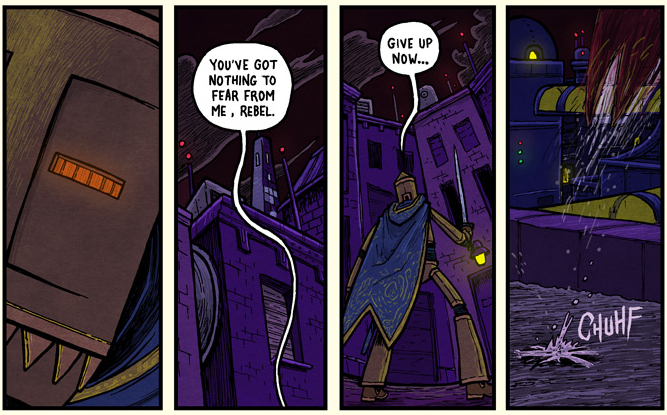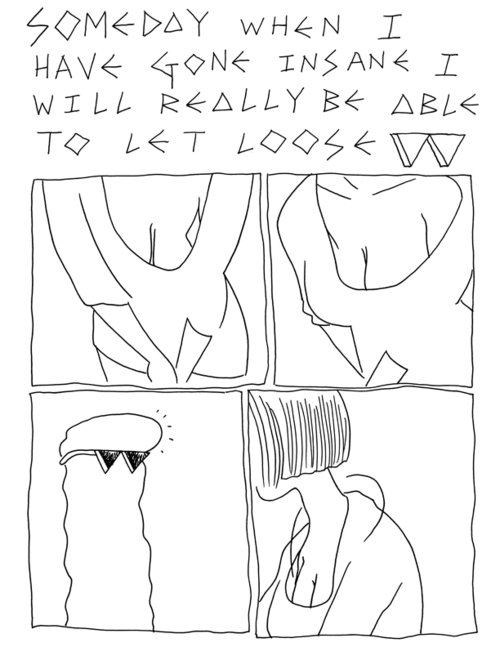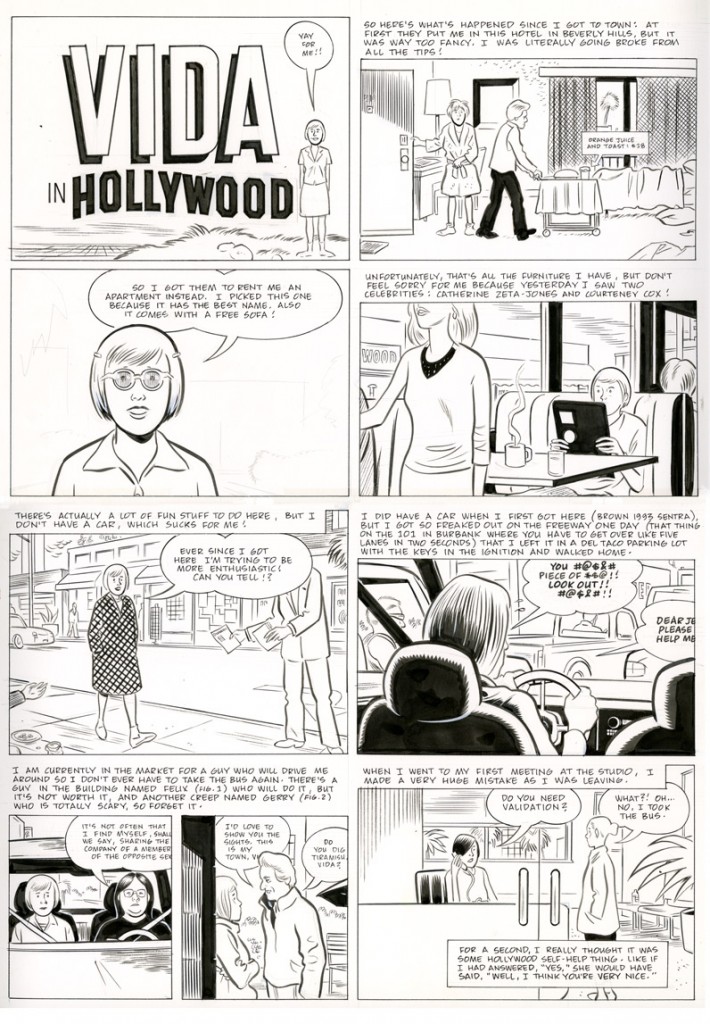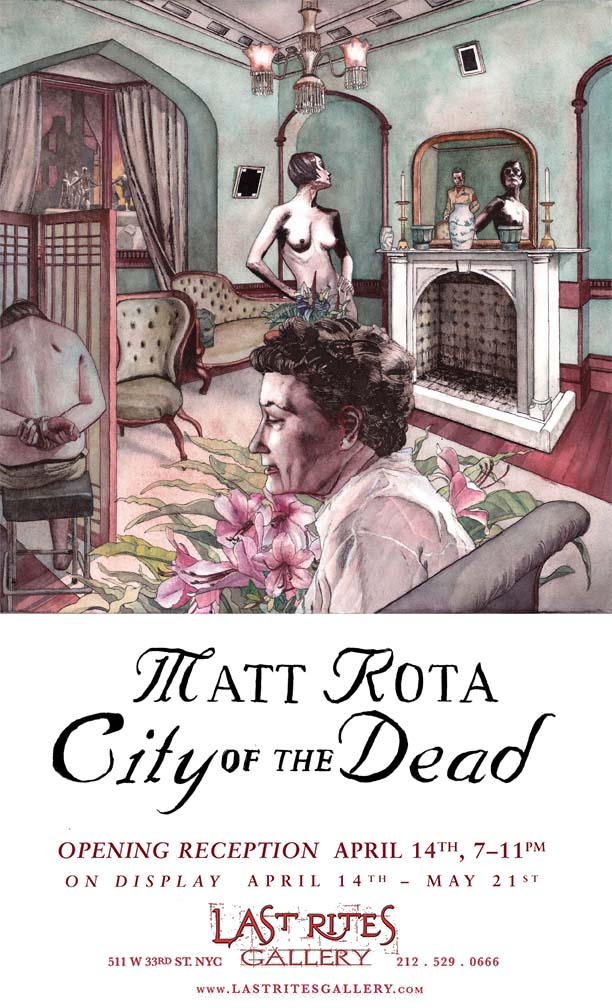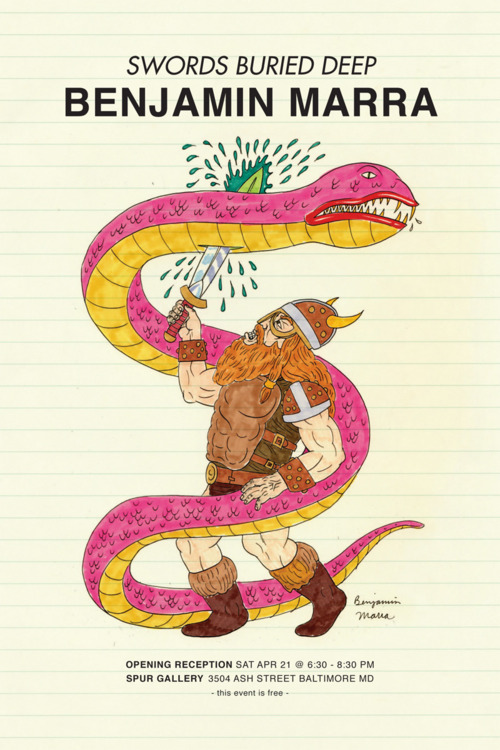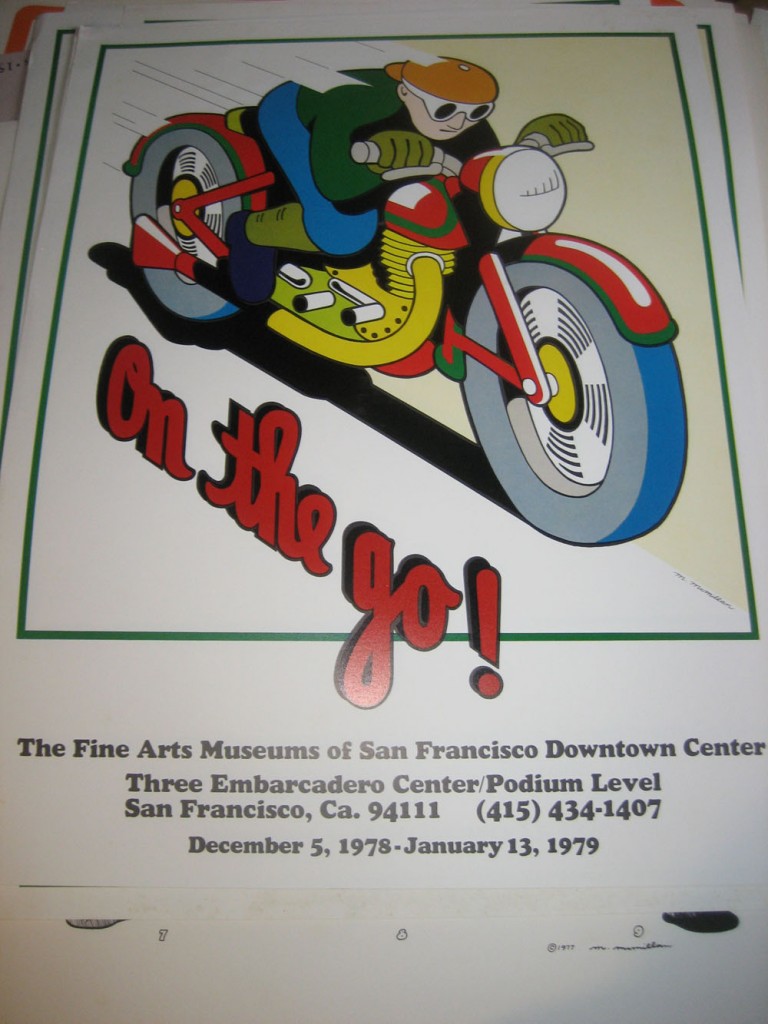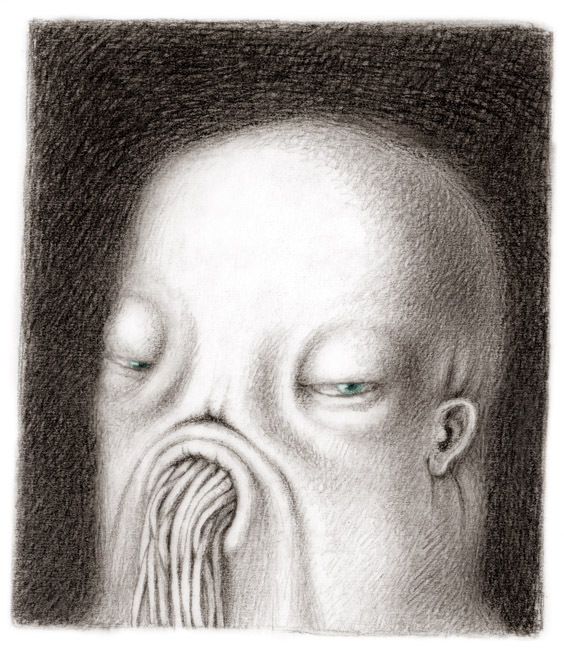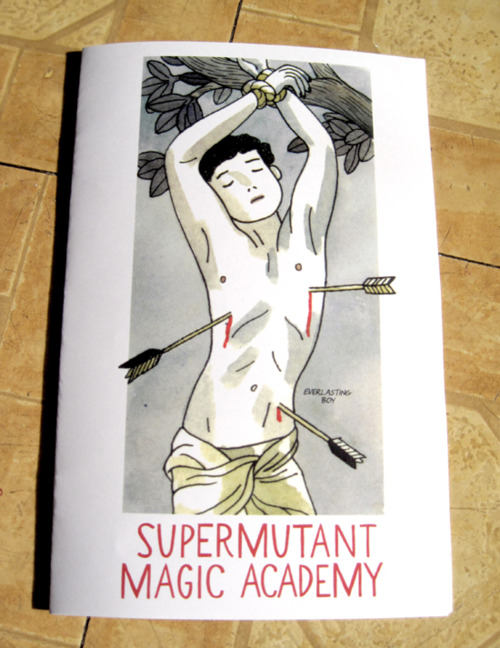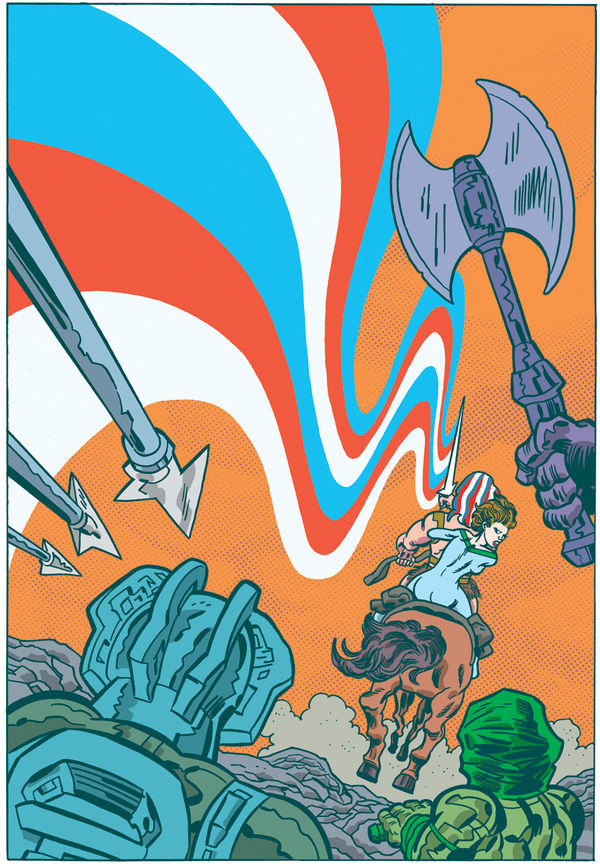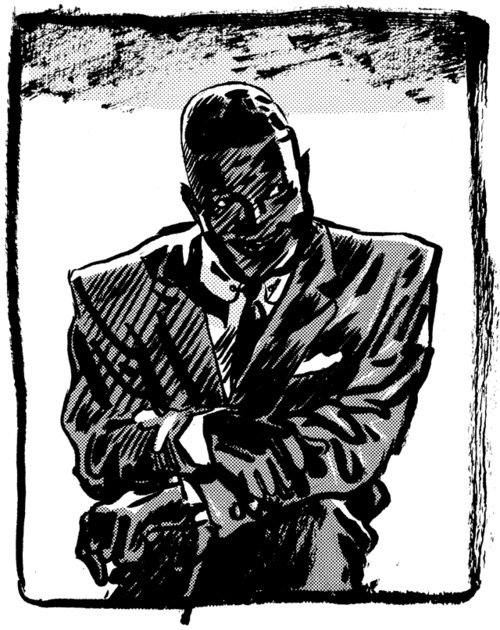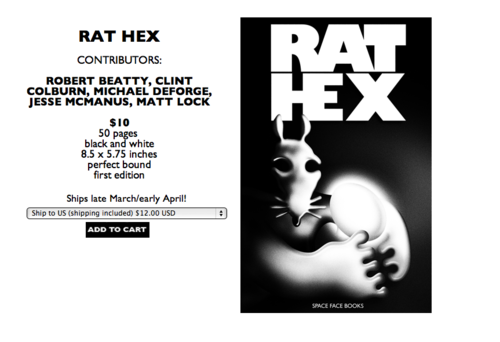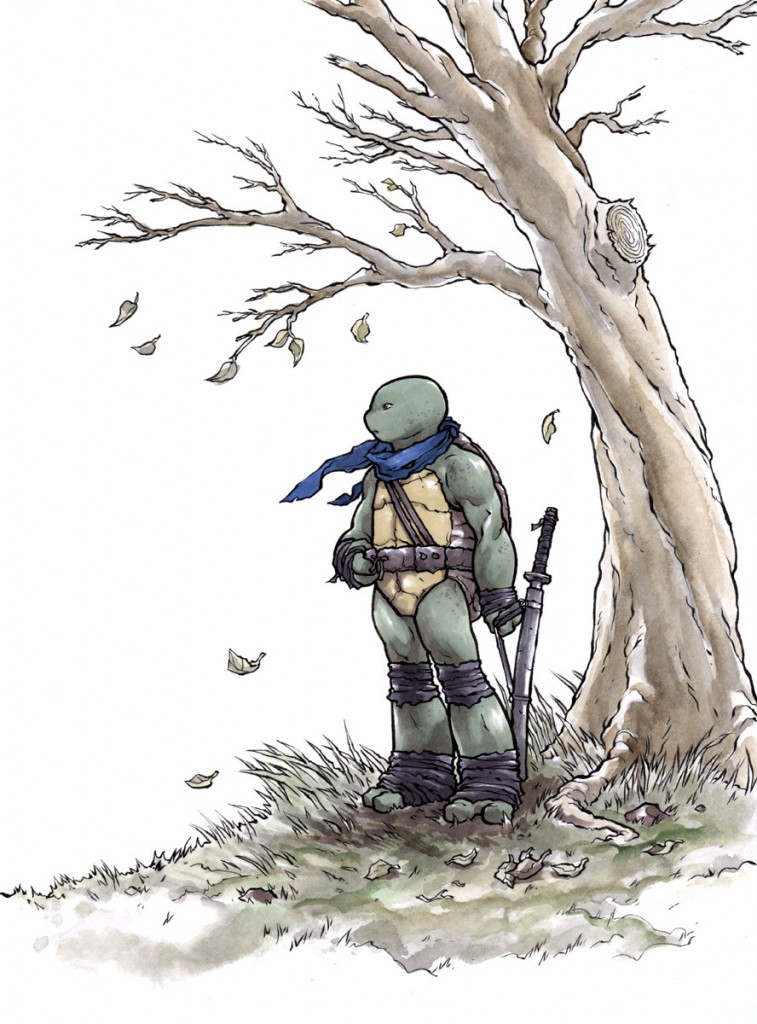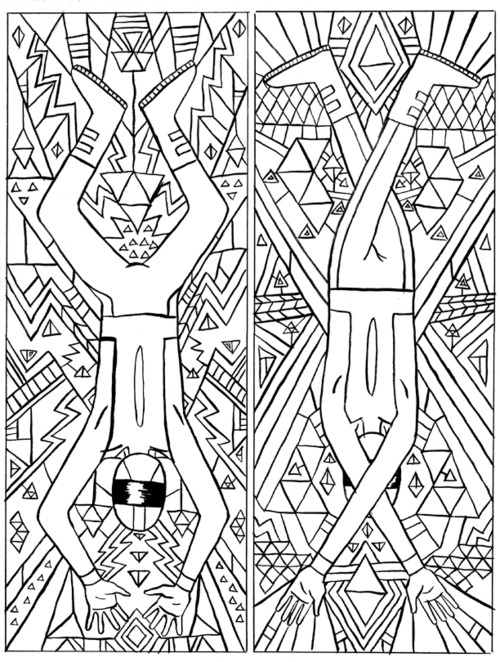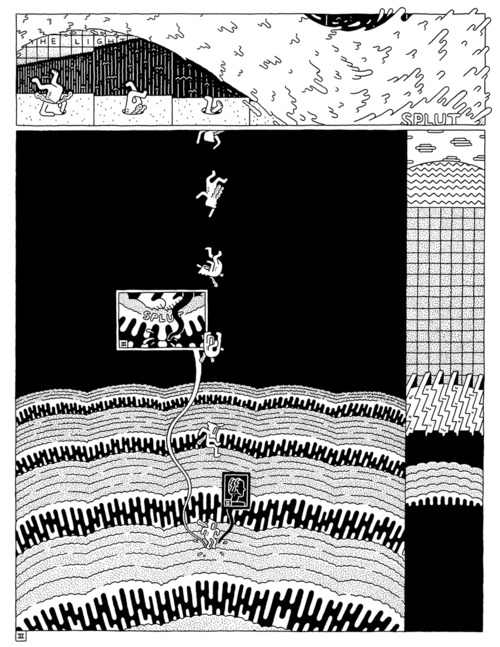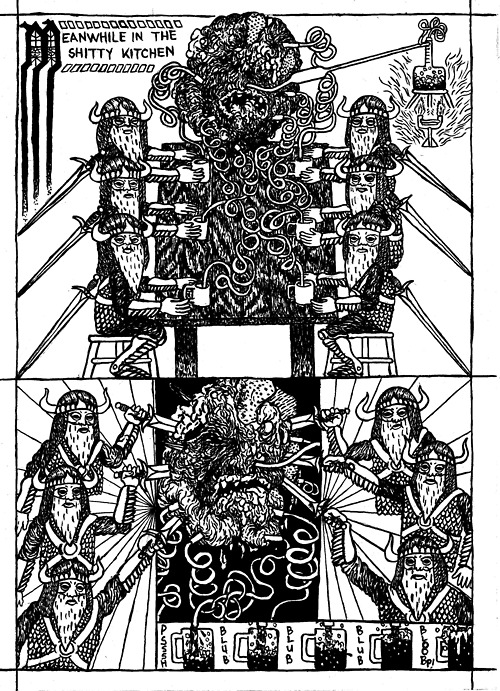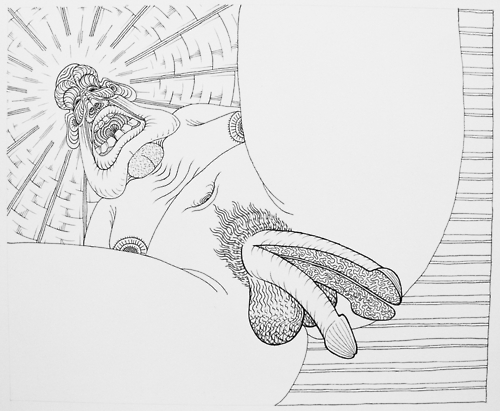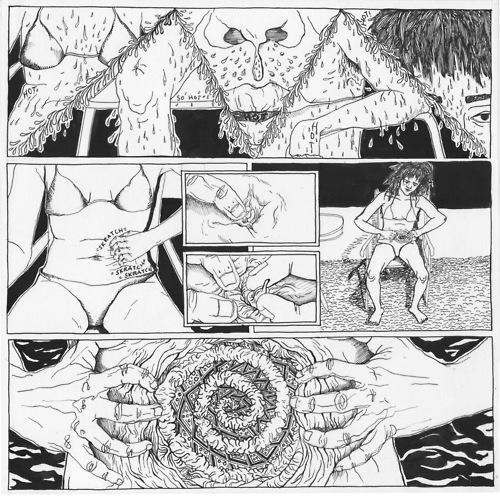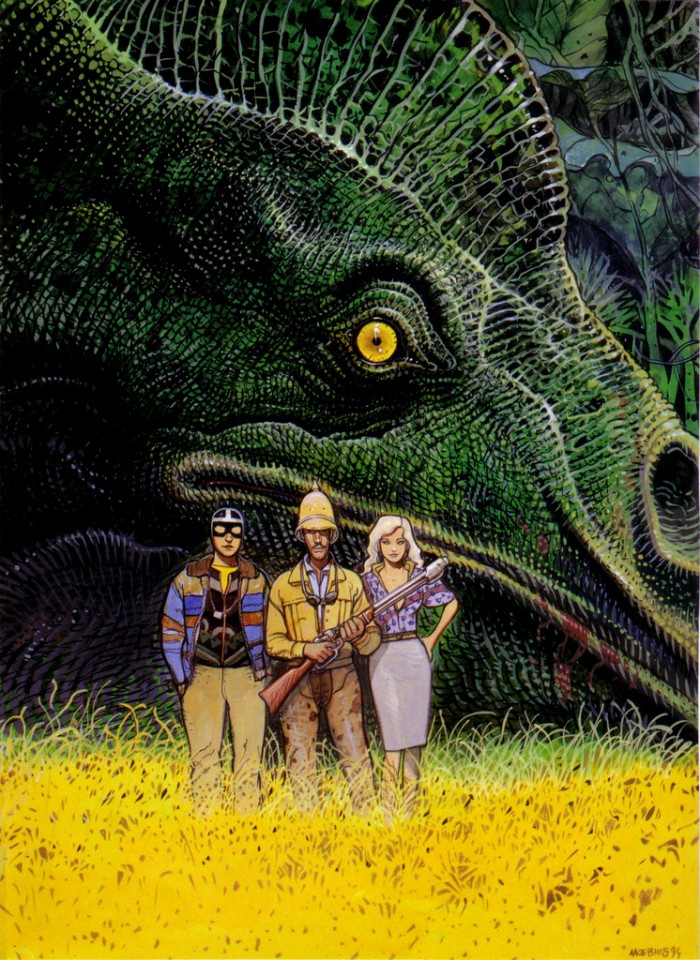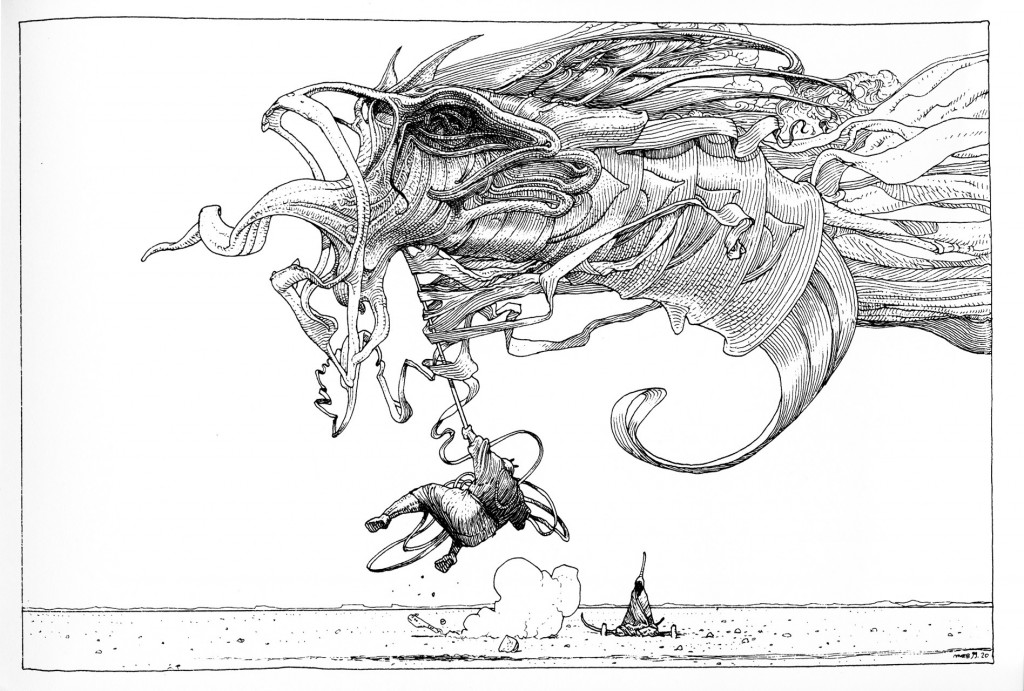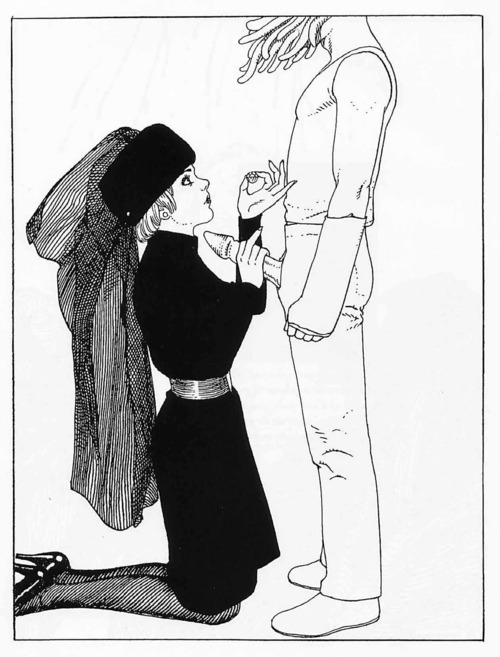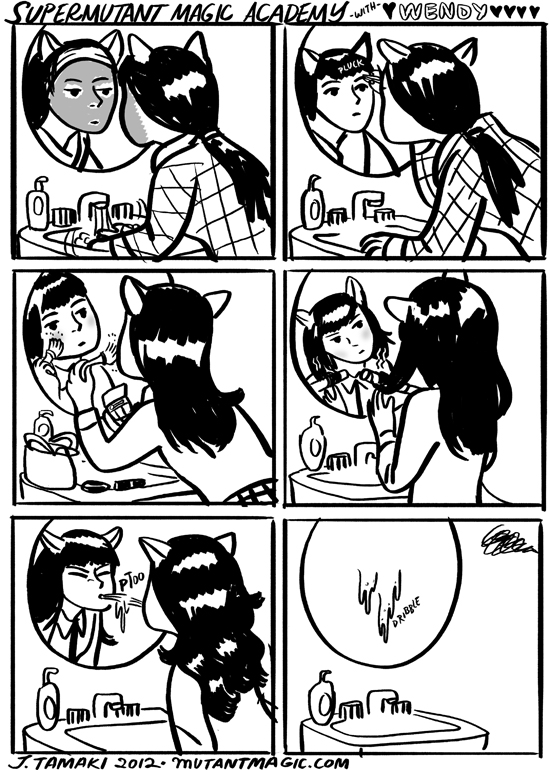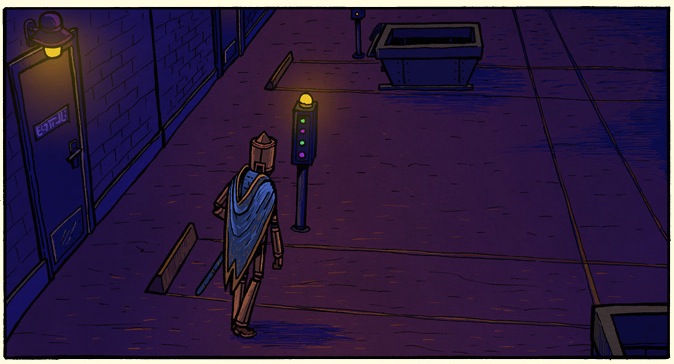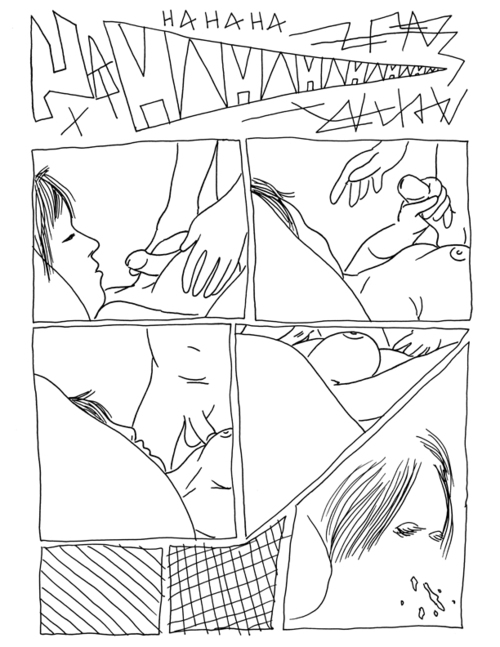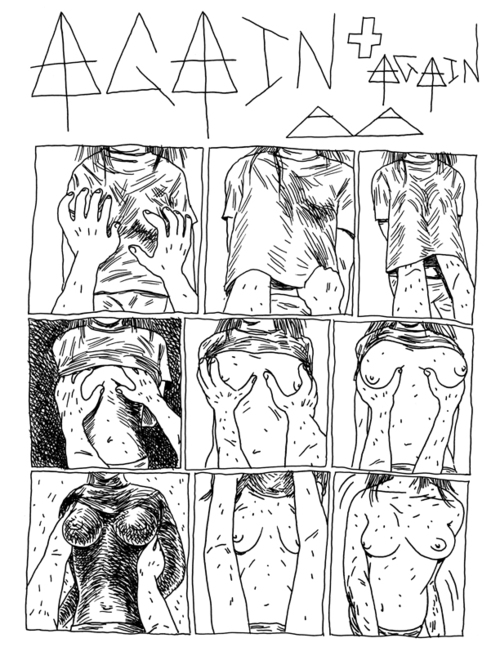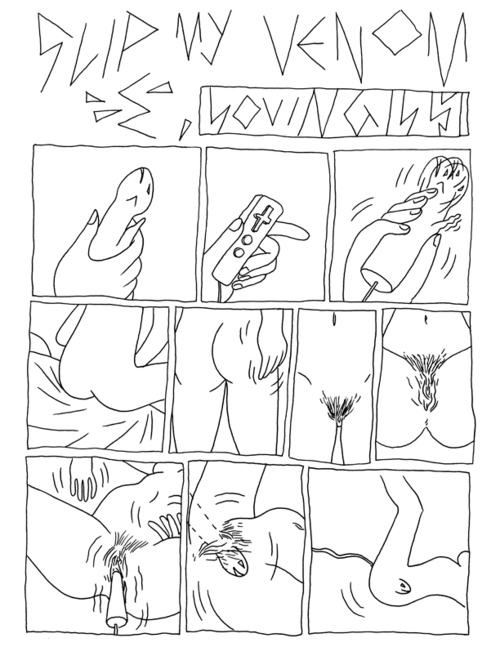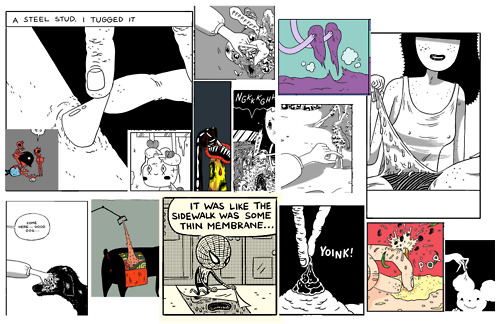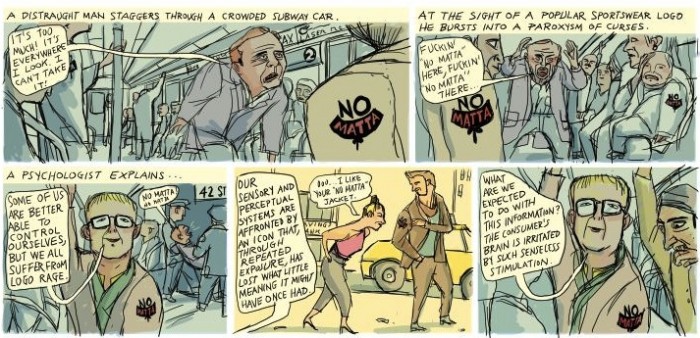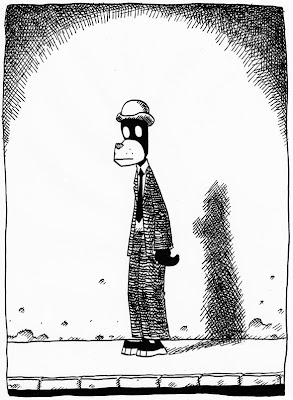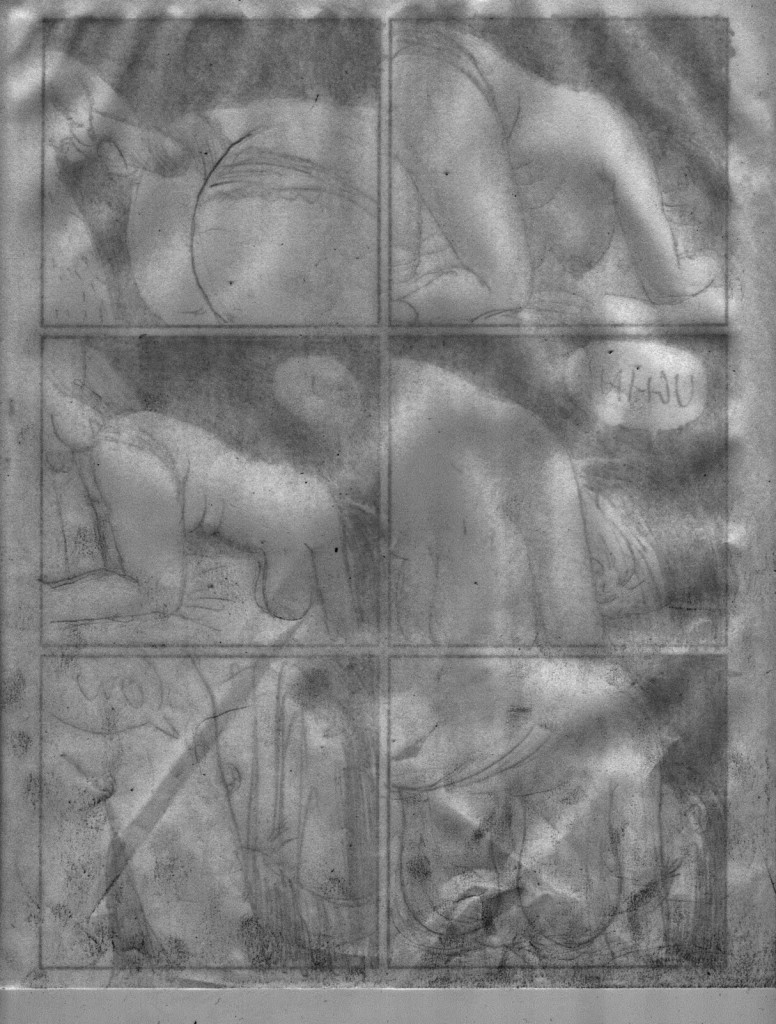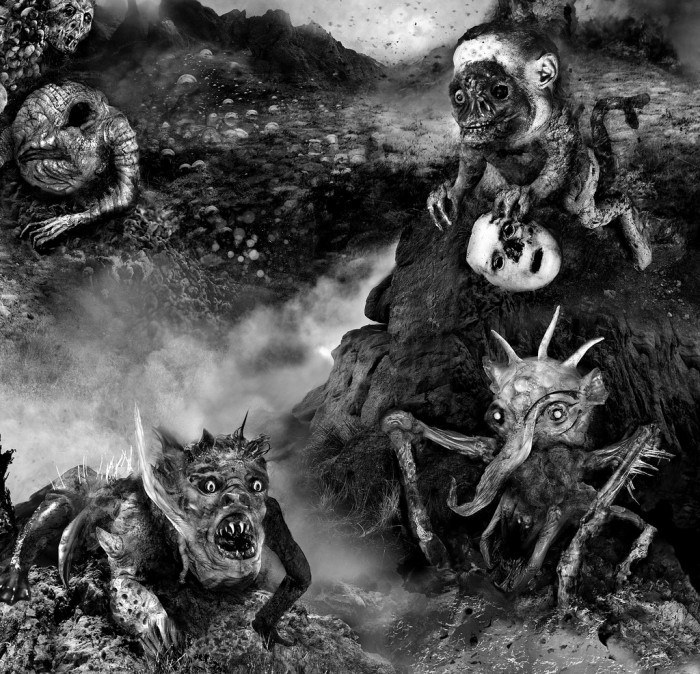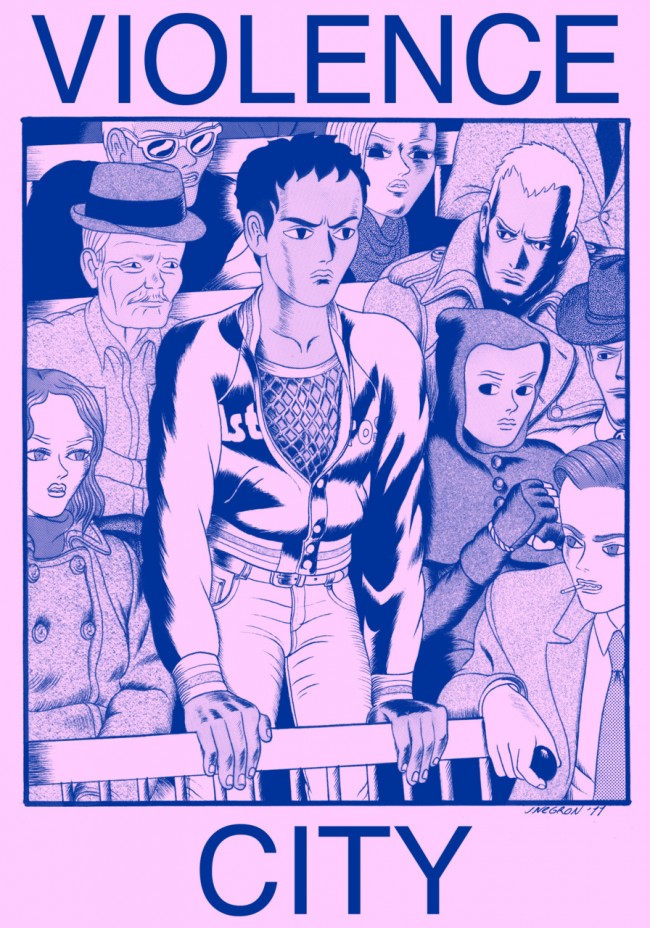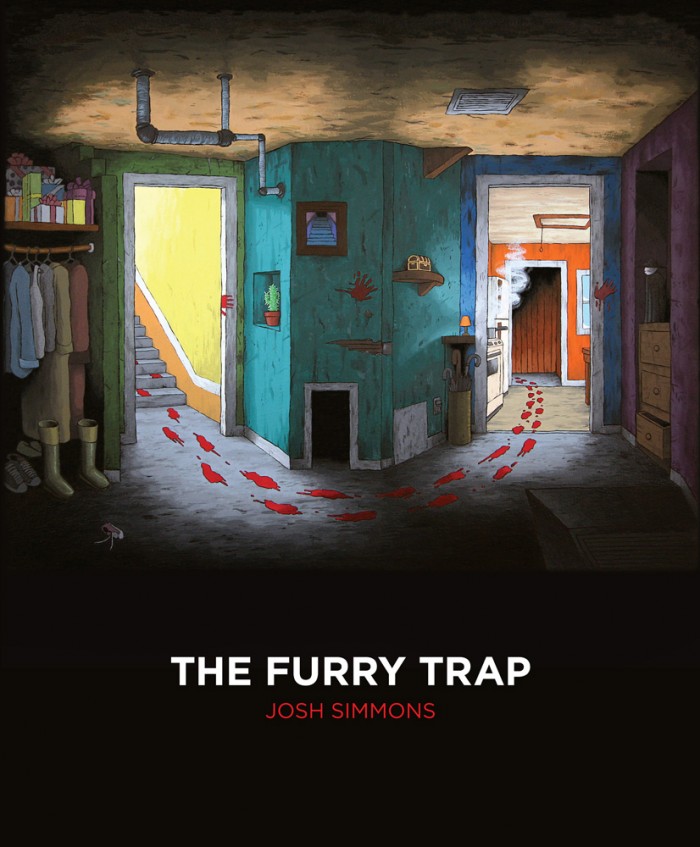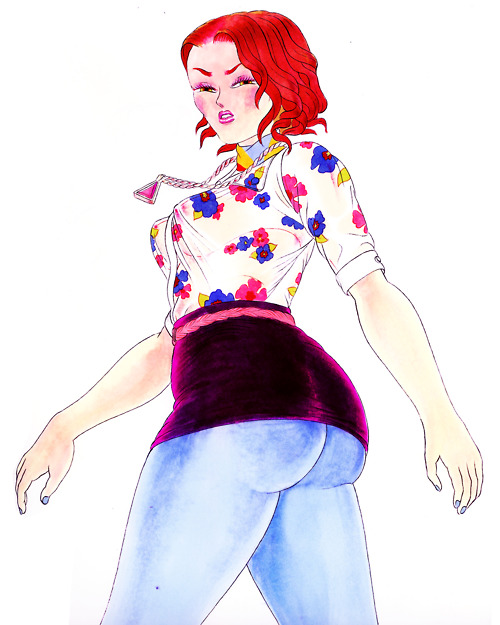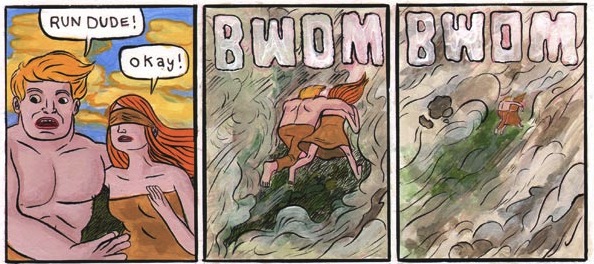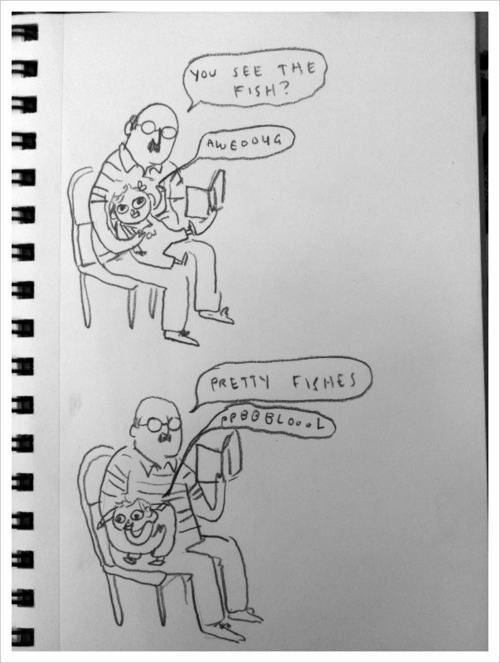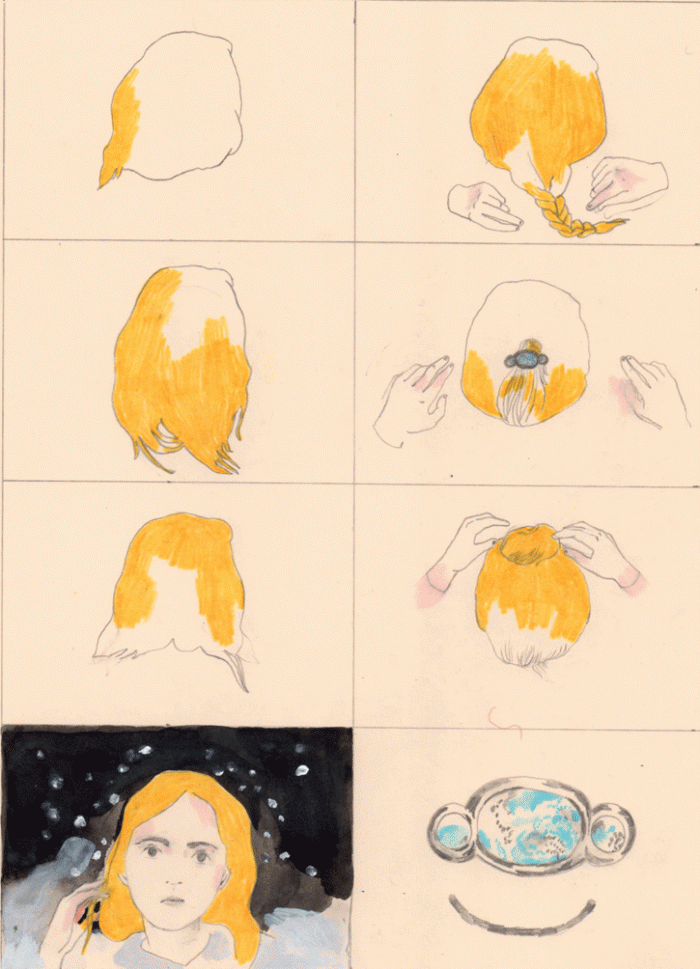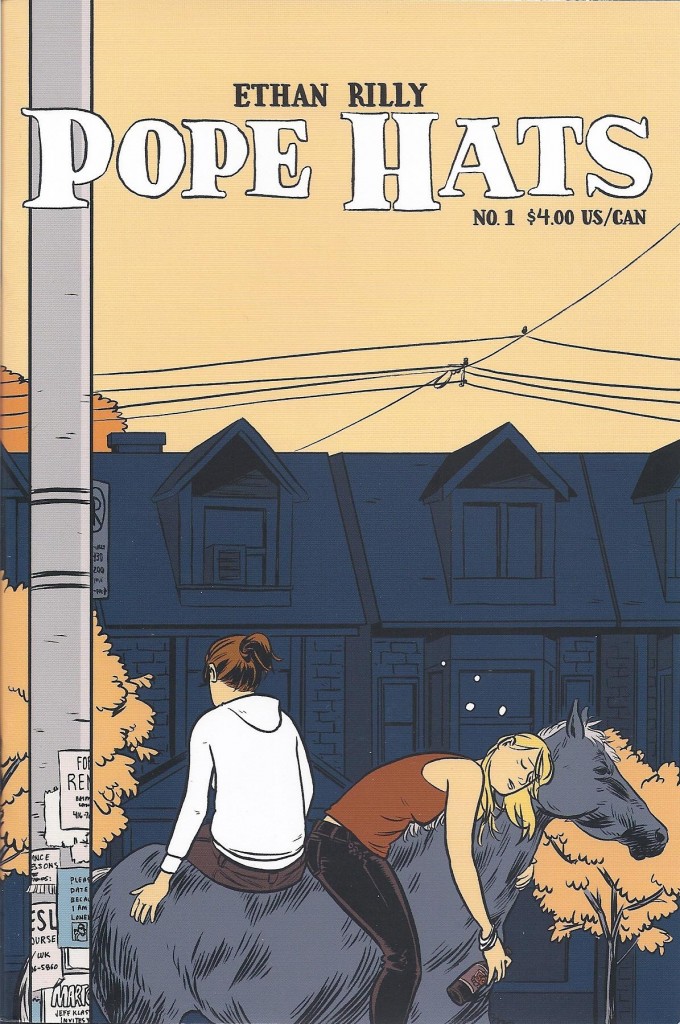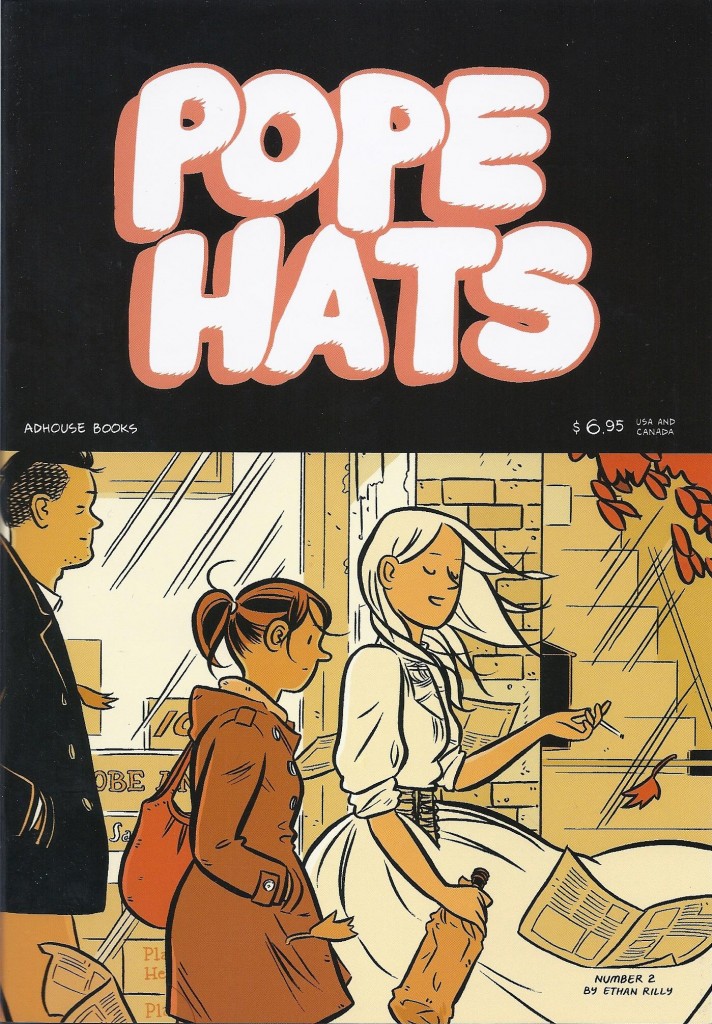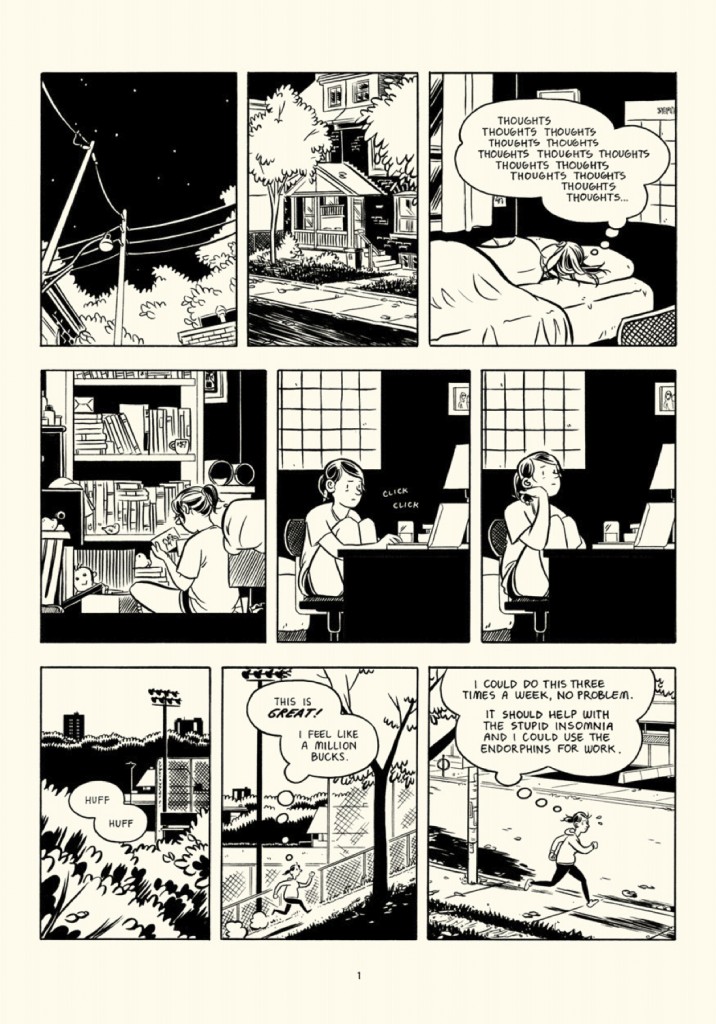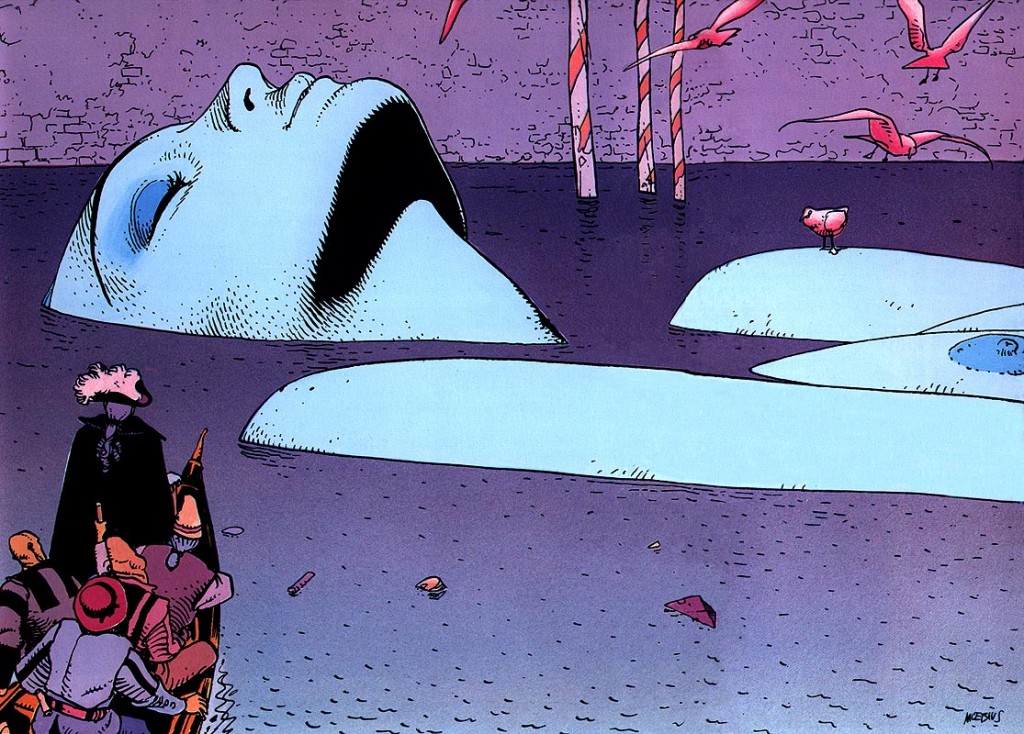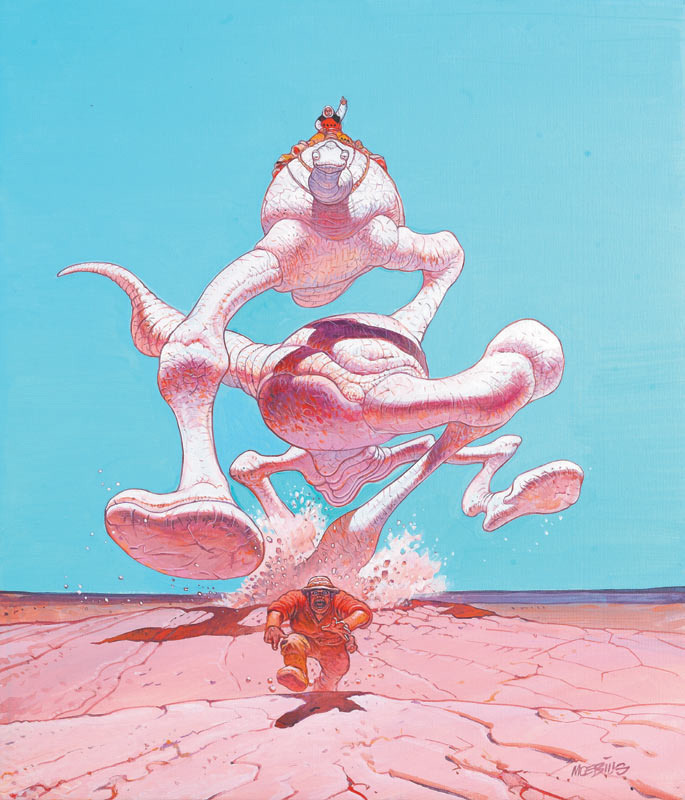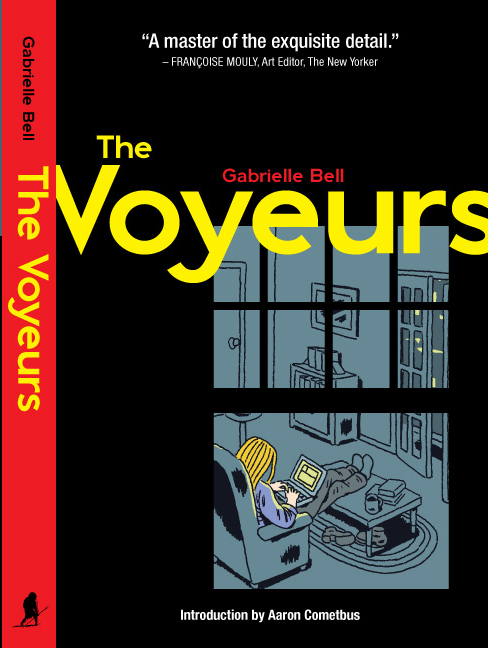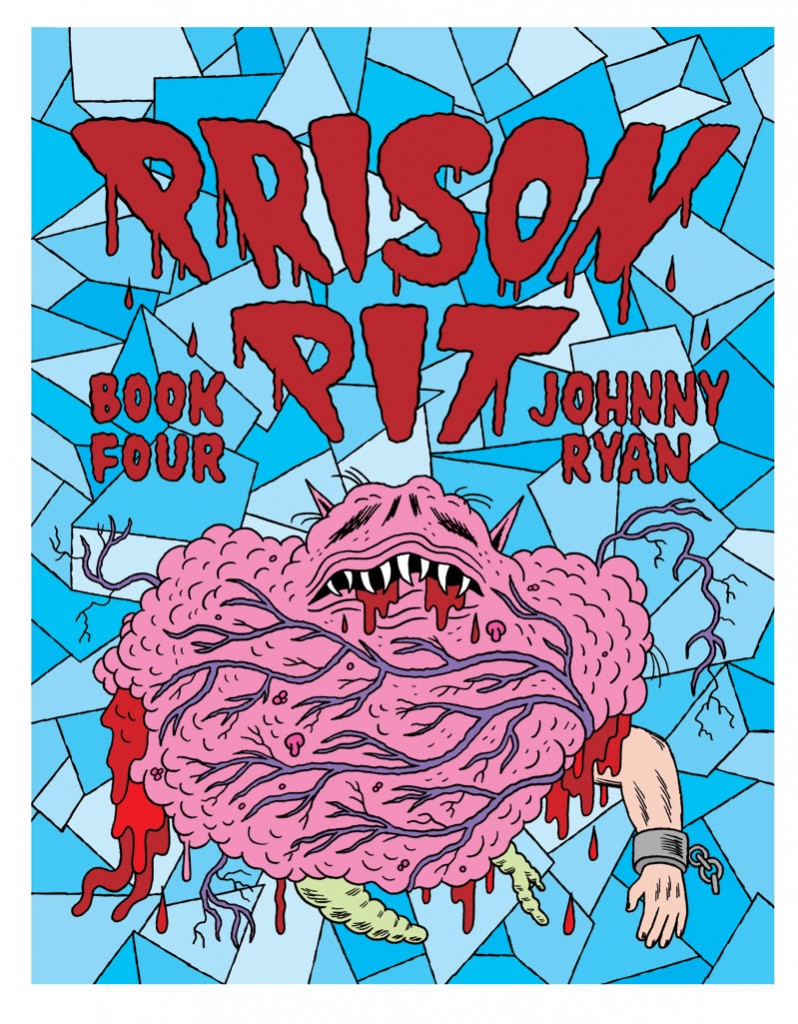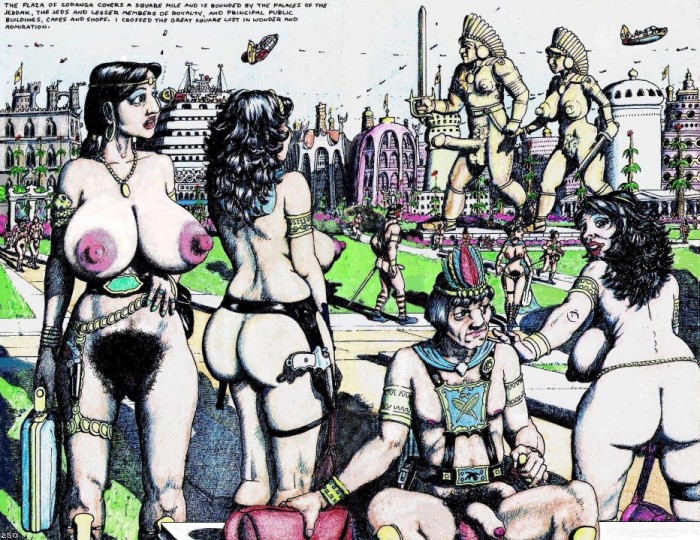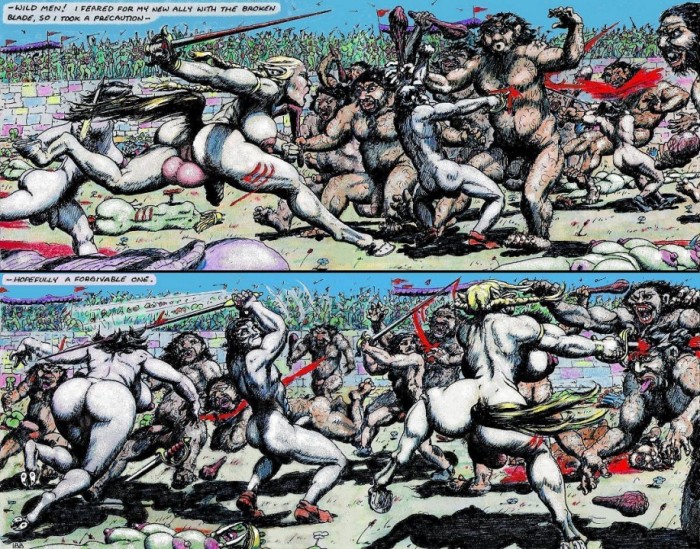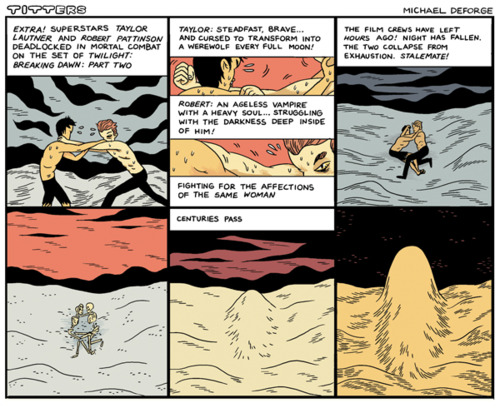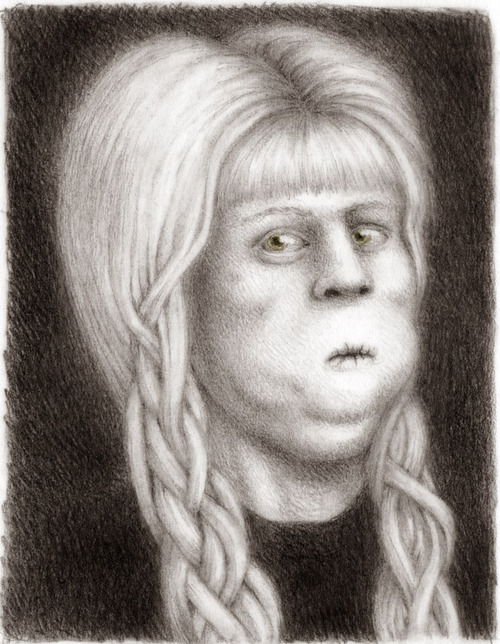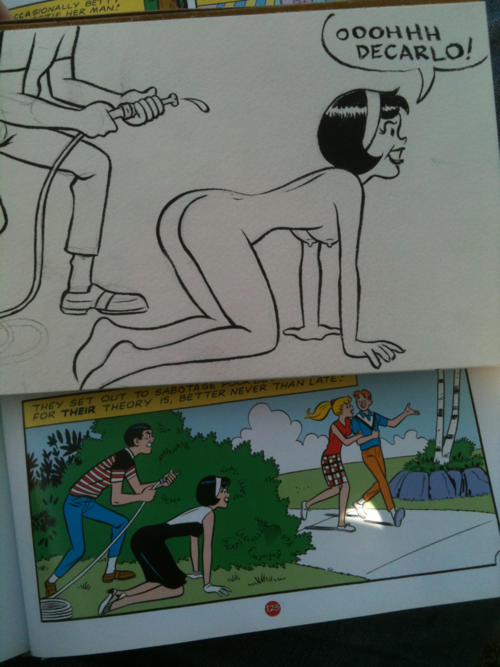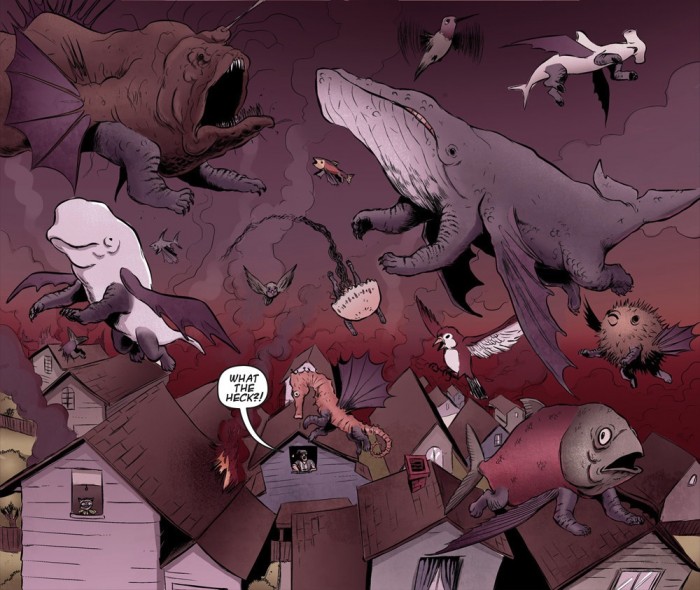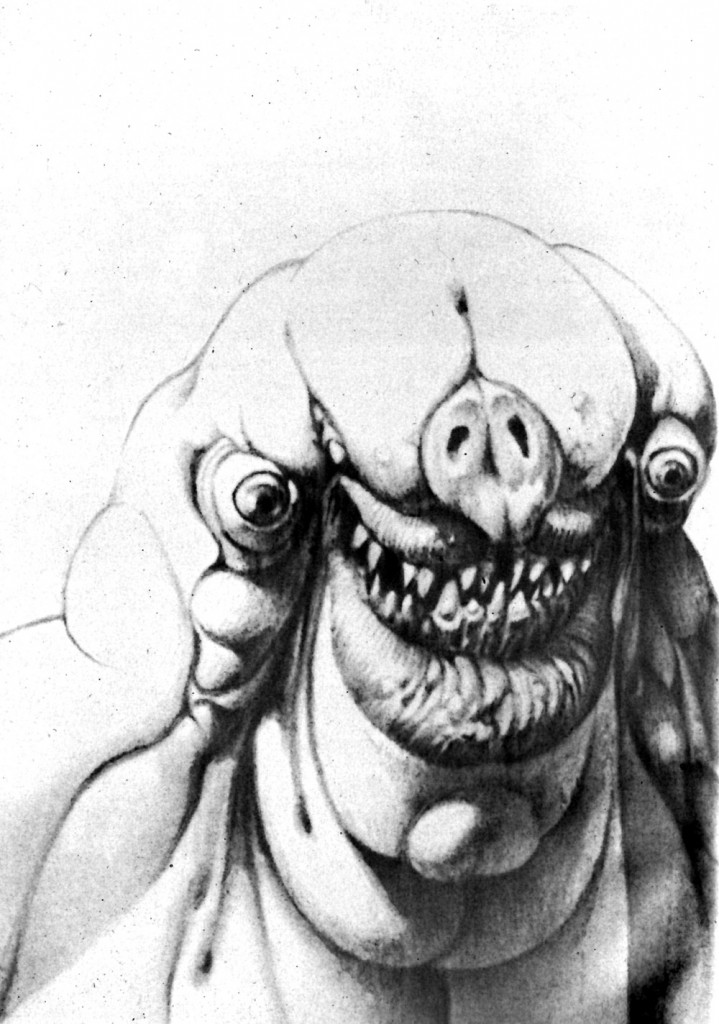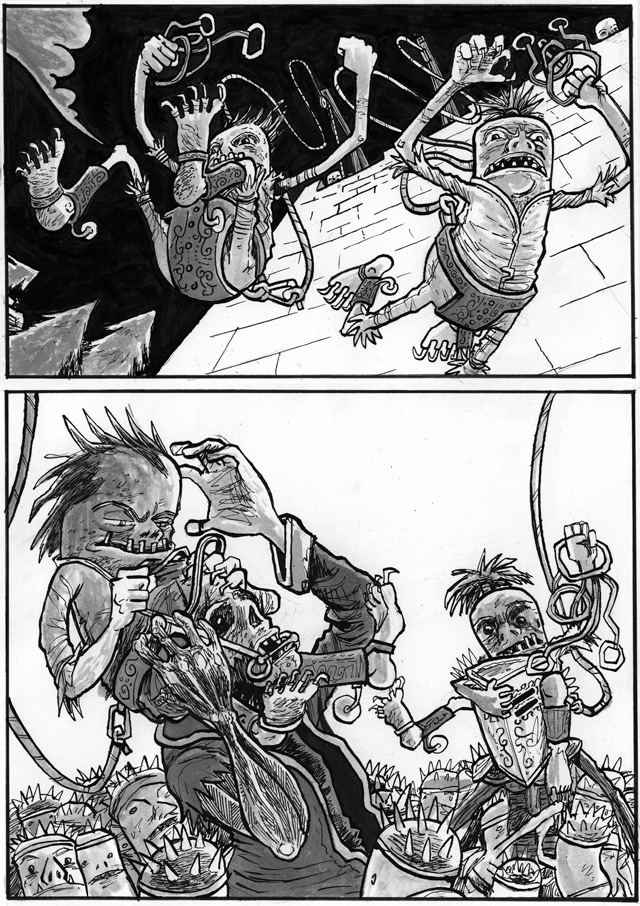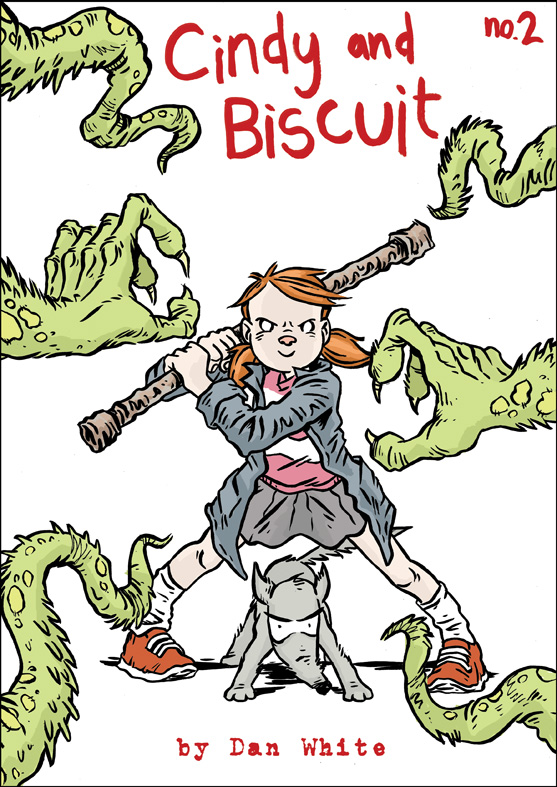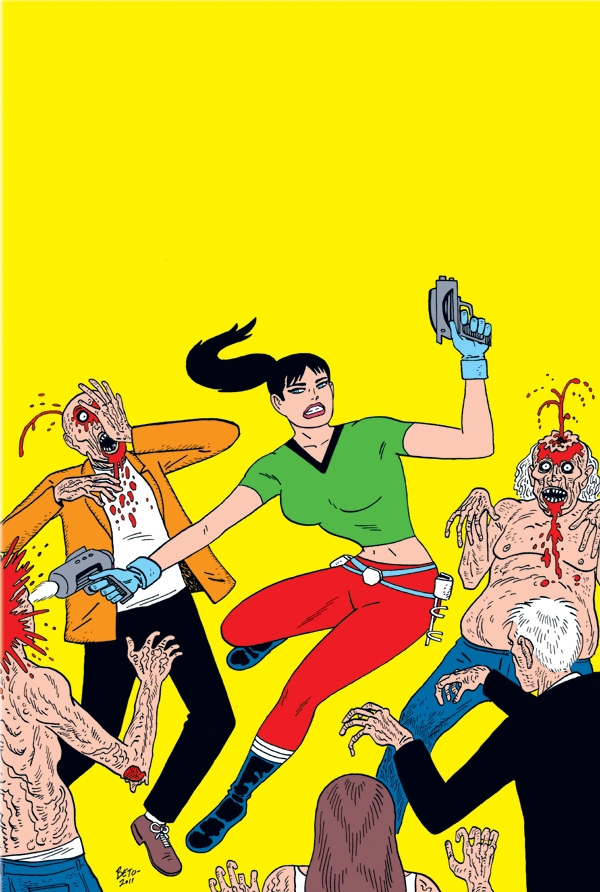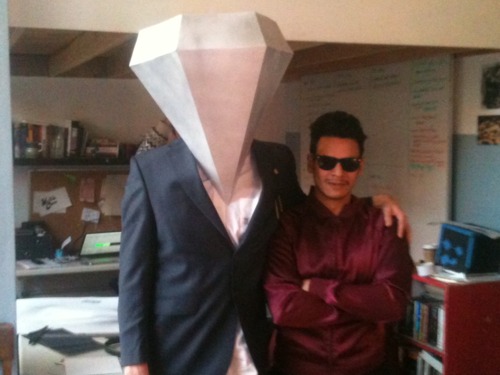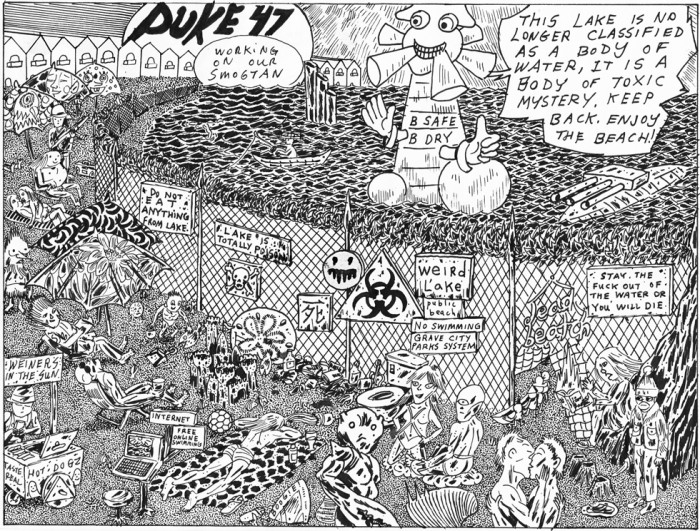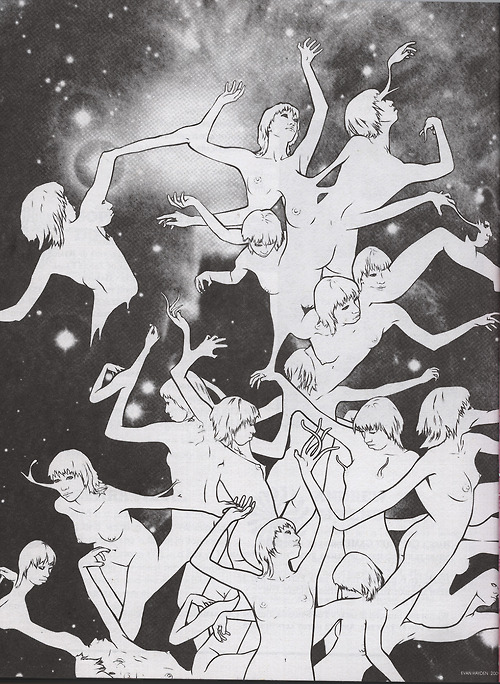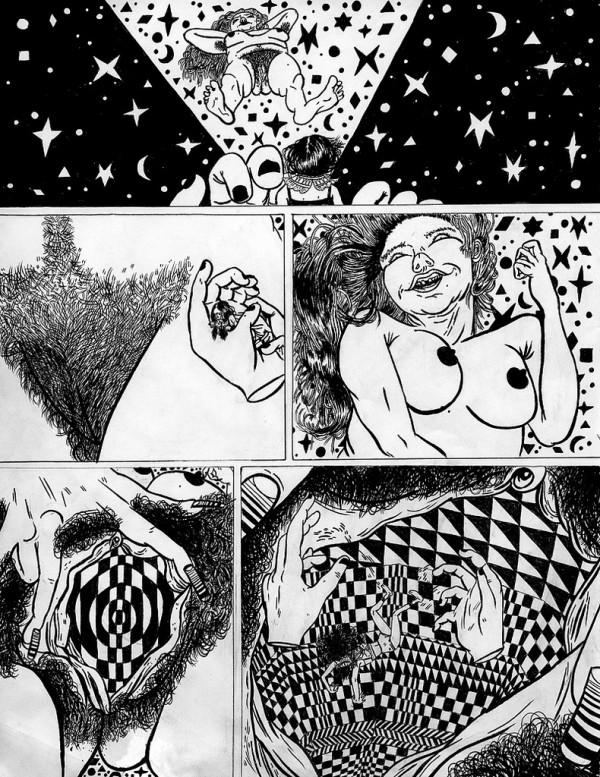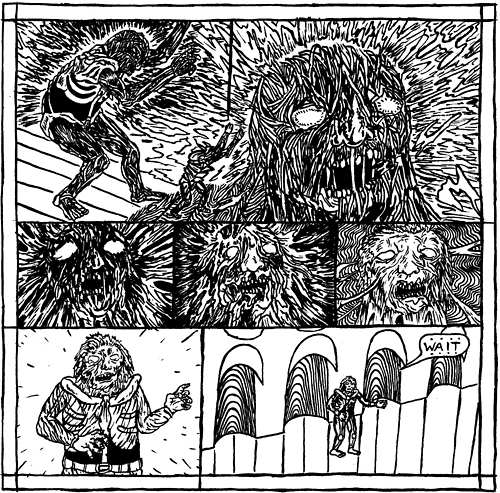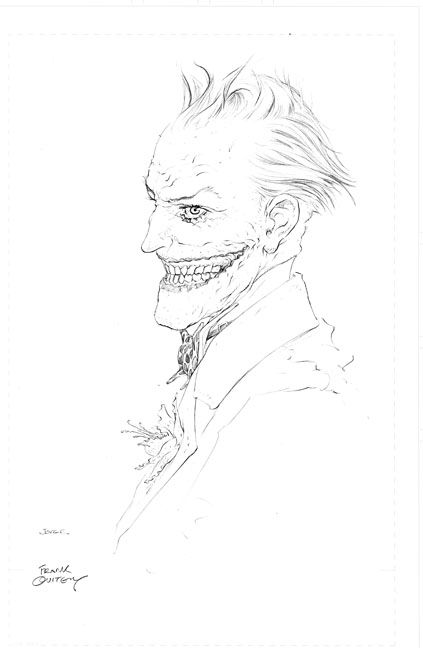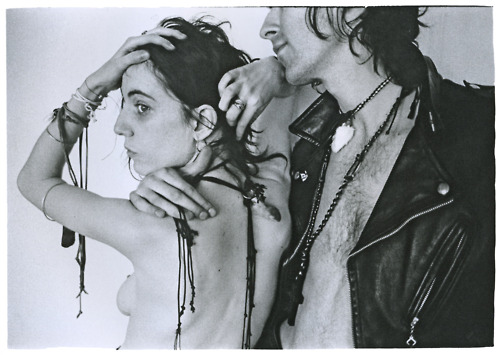Archive for March 30, 2012
Nothing to fear
March 30, 2012Page six of “Destructor Meets the Cats” has been posted.
You can read the whole story so far on one continuously scrolling page by clicking here.
‘Game of Thrones’: Season Two Cheat Sheet
March 29, 2012I’ve got a quick refresher course on the who what when where why and how from Game of Thrones Season One up at Rolling Stone, just in time for Season Two. Jog your memory with me, why don’t you?
Rolling Thrones
March 28, 2012Now it can be told: I’m covering Game of Thrones Season Two for Rolling Stone! My first piece just went up:
Get Medieval: The Seven Most Awful Things People Did on ‘Game of Thrones’ Season One
Starting off with a bang! The tone for this piece is black comedy, yeah (except for item #3 — there’s really nothing funny about it, as I was reminded while watching that scene traumatize my poor wife during her ill-fated attempt to watch the pilot the other week). But in all seriousness, these instances of truly abominable behavior set the tone for the show (and the books) in three ways:
1. It’s challenging to make memorable, moving art out of atrocities without it seeming exploitative or shallow. When you pull it off, you throw the talent of the cast and crew in even sharper relief.
2. In several cases, these incidents overturn our understanding of how this genre, or how heroic narratives, work. Much of Martin/Benioff/Weiss’s revisionist project rests in these moments.
3. And they have a thematic impact too, not just a narrative or generic one. They communicate the material’s view on war, the aristocratic system, and the unique plights of the poor and the young and the female in this system. It’s not shock for shock’s sake at all — it’s central.
So enjoy, if that’s the word for it, and watch this space for more exciting STC/GoT news!
Comics Time: q v i e t
March 28, 2012q v i e t
Andy Burkholder, writer/artist
ongoing webcomic, May 2011-present
Read it at qviet.tumblr.com
For today’s Comics Time review, please visit The Comics Journal.
Carnival of souls: Doug Wright, Dan Clowes, Dimensions, Matt Rota, Moebius, Mad Men, more
March 27, 2012* The nominees for the Doug Wright Awards, comics’ classiest award slate, have been announced. A strong selection of respectable choices, but no so strong that you won’t want to pick winners. And only three categories! A marvelous way to run a railroad.
* The Sopranos vs. The Wire, officiated by Matt Zoller Seitz. ‘Nuff said.
* Somehow it’d escaped my notice that the makers of The Art of Daniel Clowes have a Dan Clowes blog stuffed with rarely-seen Clowes goodies. Fixed! My eye naturally gravitated to this selection of Eightball t-shirts and this unpublished comic starring Vida from Eightball #22/Ice Haven. (Via Tom Spurgeon.)
* My collaborator Matt Rota has an art show opening up in the Last Rites Gallery Manhattan in a few weeks. It’ll be pretty.
* Benjamin Marra’s got a show coming up, too. It probably won’t be pretty, strictly speaking.
* Some strikingly cartooned Michael McMillan art in this brief profile by Dan Nadel.
* I often think to myself “Self, you should post more art by COOP.” Done and done.
* Renee French is a national treasure.
* Jillian Tamaki made a lovely-looking SuperMutant Magic Academy minicomic, but it’s all gone.
* Stunning use of flat color by Tom Scioli in American Barbarian, about which he is interviewed extensively by Tom Spurgeon at the link.
* Ryan Cecil Smith draws Nat King Cole.
* Michael DeForge is in an anthology with Kramers Ergot 8 space-age standout Robert Beatty called Rat Hex. I mean, Michael DeForge being in anthology isn’t the surprising part, he’s in every anthology (except that Kramers), him being together with Beatty’s a two great tastes deal is all.
* Ross Campbell draws Leonardo. It’s weird to say “gorgeous” about a drawing of a Teenage Mutant Ninja Turtle, but there you have it.
* Fortunately, the Happiness Comix tumblr appears to have exaggerated rumors of its own demise, but it’s mainly posting a smattering of art from the unrelated Dimensions anthology. I am not complaining. (Below: Hiromi Ueyoshi, Tim Beckhardt, Tom Toye, Lincoln Bostian, Bethany Price.)
* Fanmaking Moebius art selections from Monster Brains and Same Hat.
* “If you ever see a one-armed bunny, you’ll know it used to be an evil wizard.”
* Jason Adams loved The Hunger Games, which overcame his initial casting skepticism, as it appears to have done with virtually every human being. I’m gonna make an effort to see this one in the theater.
* Deadwood creator David Milch said he knew the show was ending when he wrote the finale for Season Three, which most people have long believed to have been a wholly inadvertent series finale regardless of how thematically appropriate a capstone to the whole show it would have been. I feel like this is something he might have let us know earlier!
* You can get loads more Game of Thrones stuff at the gettin’ place, including four excellent new preview/trailer/featurette things and George R.R. Martin reading a new preview chapter from The Winds of Winter.
* The Press Play blog did a series of video tributes to Mad Men in anticipation of the season premiere; the one below is my favorite.
Mad Men thoughts, Season Five, Episode One: “A Little Kiss”
March 26, 2012SPOILER ALERT
* Mad Men Addresses Civil Rights (capitalized for the critics who wanted it to be addressed in capital letters like that, as if race’s liminal presence on the show wasn’t Matthew Weiner and company doing exactly that already) in the most Mad Men way possible: a bunch of happy asshole ad execs dropping water bombs on a picket line. This sets off a chain of events culminating in Sterling Cooper Draper Pryce integrating because of a prank that people who aren’t Sterling Cooper Draper Pryce actually took seriously. The arc of the universe is long, but it bends toward Joan Harris.
* My first big laugh of the night — and there were many, many more; this show’s hilarious, and after a few weeks of immersion in Game of Thrones I really appreciate that — came when Roger explained schadenfreude to Pete while they discussed Young & Rubicam’s PR black eye: “They stole the Ponds account, and now they’re a laughing stock. Makes me feel better!” It’s telling that Roger derives such satisfaction from something with which he had nothing to do, given that he doesn’t seem to have much to do with anything anymore.
* Pete looks like hell — disheveled collar, ugly tie, puffy face. I feel like his receding hairline became much more noticeable about halfway through the episode — when someone cracked a joke about him going bald at Don’s surprise party, I had no idea what they were talking about, but at some point after that it was like “whoa!” Hausfrau is a good look for Trudy, I think, despite what Pete says to his train friend (surprise: Alison Brie looks good in almost anything!), but suburban fatherhood is wearing very poorly on Pete himself, in physical terms alone.
* Civil rights was not the only c-word to crop up in a newly noticeable way: I’m pretty sure that the ill-fated Heinz baked beans meeting was the first time a client has requested that SCDP make an ad “cool.” Actually it may be the first time anyone’s used that word on the show at all. That’s a sea change in itself.
* Sally Draper wanders around Don’s weird new apartment like it’s the hotel in The Shining, then goes home to a house that looks like the Bates Motel from Psycho. I wonder if Sally will continue to be one of the show’s main vectors for the Weird — from fearing that her baby brother is the reincarnated ghost of her dead grandfather to the masturbation storyline, she’s provided Mad Men with some of its by-TV-standards strangest material. A great way to use a great child actress. (Here’s where I admit to my moment of shock when she opened her mouth and Kathleen Turner’s voice came out.)
* Did Joan select the color of her apartment walls to complement her hair?
* Bert Cooper arguing Vietnam with Peggy’s beatnik boyfriend was a magnificently funny moment. Either one may as well have been speaking Klingon for all the other could understand him.
* The Roger/Jane exchange at Don’s party — “Why don’t you sing like that?”/”Why don’t you look like him?” — will get a lot of attention and deservedly so, but for my money the real killer laugh line was their brief conversation when Roger gets up early to go to Pete’s fake Staten Island rendez-vous with Coca Cola: “What time is it?” “Shut up.” Now there’s a couple that’s comfortable with their contempt.
* Watching Don’s party unfold, with its Austin Powers aesthetic and soundtrack, I realized I’m quite happy the Rat Pack shit’s dunzo. I like to think that contemporary audience members out to ape Mad Men‘s retro-cool style without considering, uh, pretty much anything else about the show, or indeed supplanting the show’s critique of its era with an implicit endorsement, will have a more difficult time of it now that the styles are a) more garish; b) more directly associated with a time of political movement toward the left.
* Lane Pryce and the gun moll! God I hope that was Paz de la Huerta on the other end of the phone. Also, kudos to commenter Collegeboy on Matt Zoller Seitz’s review for noting that the woman’s name was Delores, which perhaps accounted for Lane’s resulting Haze. I’d already thought Jared Harris was James Masoning the living shit out of that conversation, but I hadn’t made the direct Lolita connection.
* Speaking strictly as a longtime guide on Don’s Tour of the Great Brunettes of the ’60s, I take this episode as a thorough vindication of my early Megan support. And not just appearance-wise either, although jeez. Megan may be struggling with Don’s propensity to shut himself off behind a black curtain, and that may be a generational thing, even just by a few years: she lumps her nominal contemporary Peggy in with Don during their conversation about cynicism at the office the following Monday, after all. But in general, it seems like she can hang, don’t you think? She’s made his darkest secret into something they joke about in bed. She’s chosen to stand up to all the potential and actual opprobrium thrown her way by becoming both his wife and his colleague/employee on the agency’s creative end. Most strikingly, in this episode anyway, she’s integrated Don’s many many many hangups into their sex life with real lacerating heat. Her anger during the underwear/cleanup scene was real and everything that led up to it was real, but as her and Don’s language became more and more dom-sub, my jaw dropped: these were not words, and this was not a dynamic, arrived at by chance in this moment. This was sex born out of experience with the stuff that turns them both on, and dark stuff at that. In the past Don could only get that out of his more sordid assignations, including the prostitute he paid to hit him during sex this time last season. Now he’s sharing this with his wife, who also shares his home, his family, his office, his creative life. Neither Betty nor Faye nor any of Don’s affairs ever hit for the cycle like that. Megan’s a force to be reckoned with.
* Which is not to say that their argument wasn’t legit, or its fallout (again!) very funny. “Haveagoodday.” “‘Kay.” Been there, bro!
* Joan Harris, human gif.
Carnival of Thrones
March 22, 2012* Game of Thrones Season Two starts next Sunday, April 1. I have one of my trademark secret Game of Thrones projects lined up and hope to share more about that with you soon, but in the meantime, as you might expect, I’ve been blogging up a storm at my dedicated A Song of Ice and Fire blog, All Leather Must Be Boiled. Here are some recent highlights. (I’ve linked to a handful of these before, but figured putting them all in one place could be useful.)
* First, a link that’s not to my blog at all: This piece in the Atlantic by James Parker is the single best piece of writing on A Song of Ice and Fire or Game of Thrones I’ve ever read. It’s beautifully constructed, it nails the strengths and appeal of the series, and it approaches them from unexpected directions. Marvelously done.
* Next, there are a metric ton of preview and trailer videos available: Here’s a newish trailer and character profiles for Renly, Joffrey, Daenerys, and Jon; and here’s the best trailer of the bunch and character profiles for Robb and Stannis.
* George R.R. Martin and the Westeros.org team are prepping The Lands of Ice and Fire, a boxed set of maps that go into more detail than ever before. Quite excited about that.
* George Stroumboulopoulos interviews George R.R. Martin for Candian TV, the first interview I’ve come across that addresses Martin’s conscientious objector status during Vietnam, his thoughts on pacifism, and the way his beliefs about war influence his depiction of it in the books. Red meat to me, naturally.
* What I’m worried about, and not worried about, in Season Two, from the perspective of a reader of the books. Inspired by this excellent roundtable with various ASoIaF/GoT experts on that very topic. And here’s what concerns me most about the show’s storytelling in general, in any season; it’s probably not what you think.
* The most recent episode of my Boiled Leather Audio Hour podcast with Stefan Sasse and special guest Amin from A Podcast of Ice and Fire focuses on A Song of Ice and Fire-related games; I provide the non-gamer perspective.
* A quick, kind of angry post on incoming Game of Thrones writer/producer Vanessa Taylor and the importance of hiring women writers.
* An ill-fated attempt to rewatch the first season with my wife, who has neither seen the show nor read the books, prompted some thoughts on the role and reception of cruelty in art. When you’re as familiar with the material as I now am, it can be helpful to see the series’ abuse of women and children and animals through fresh eyes. See also this post linking attacks on children by authority figures in Game of Thrones and The Walking Dead to the recent real-world massacre of sleeping children in Afghanistan — extend it to Trayvon Martin, too, because I think we should. A culture of violence will inevitably find a way to target the most defenseless among us, like water finding its level.
* I was impressed by Westeros.org’s interview with Catelyn Stark actress Michelle Fairley, historically not my favorite performance/writing combo on the show.
* Here’s a long post on John Carter and the perils of adapting a geek-friendly property from one medium to another.
* My spoiler policy, for life in general.
* Does prophecy negate free will? I’m pretty proud of the analogy I cooked up to explain why the answer is no.
* By the way, I’ve seen the first four episodes of the season. Do I know what will supplant “sexposition” as the Game of Thrones trope thinkpiece generator of choice this season? You bet I do.
Comics Time: SuperMutant Magic Academy
March 22, 2012SuperMutant Magic Academy
Jillian Tamaki, writer/artist
Ongoing webcomic, December 2010-present
Read it at MutantMagic.com
For today’s Comics Time review, please visit The Comics Journal.
Draw swords
March 21, 2012Page five of “Destructor Meets the Cats” has been posted.
You can read the whole story so far on one continuously scrolling page by clicking here.
Carnival of souls: q v i e t, Film Art, Prometheus, more
March 20, 2012* For pete’s sake, someone please hook Rick Trembles up.
* These “q v i e t” sex comics are wondrous. Sexy, funny, dissonant, imaginative, as sex tends to be at varying times. (Via Conor Stecschulte.)
* Big PictureBox sale all month long!
* Have I used the “Brian Chippendale is the best he is at what he does, and what he does is write lengthy, funny, thoughtful essays on the on-page and off-page ethics of Marvel comics” formulation yet? Because if not, let me do so here.
* Great news for film fans: Bordwell and Thompson celebrate the tenth edition of their seminal Film Art by partnering with the Criterion Collection for online examples of the techniques they discuss in the book. By the way, “seminal” gets tossed around a lot, but get this: “Film Art was the first introductory film textbook to use frame enlargements rather than publicity photographs as illustrations.” Let that sink in for a moment.
* Michael DeForge starts collecting his own go-to tropes. He seems a bit anxious about repeating himself, but I think it’s a lot of fun to have amassed enough work that you start to notice things repeatedly popping up without your having intended to put them in there. Related: Read Leather Space Man and Abbey Loafer and Military Prison and and and…
* Ben Katchor’s “Logo Rage” is his funniest, bleakest strip in some time. Go read the whole thing.
* Hot stuff from ADDXSTC fave Conor Stechschulte.
* Meanwhile, Conor’s Closed Caption Comics compatriot Andrew Neyer has a new series of panel paintings I quite like.

* Aeron Alfrey’s not just the President of Monster Brains, he’s also a client.
* Upon the great artist’s death, Joe McCulloch and Chris Mautner select six essential Moebius books. It’s amazing to think that more well-done, in-print English editions exist for Jacques Tardi or Lewis Trondheim than for Moebius, but that’s where we’re at and where we’re likely to remain.
* Bruce Baugh on California gothic (The Lost Boys, Blue Velvet, Invasion of the Body Snatchers, etc.).
* Remembering the “go-motion” animation technique of Phil Tippett. This is what “real” looks like to me, in terms of movie monsters.
* Longtime friend of the blog Jason Adams of My New Plaid Pants counts down his Top 20 Movies and Top 10 Scary Movies of 2011.
* Animals are killed during the making of all shows and films. How do you think catering and craft services get their chicken and burgers and whatnot, the meat fairy?
* Finally, the trailer for Ridley Scott’s Prometheus isn’t as good as you’ve heard…it’s better. Charles Barkley was right when he said that any knucklehead can cut together an awesome trailer (I think that’s what he said), but even so. This thing is pretty much predicated on validating your continued belief, over the course of decades and in the face of reams of inferior entertainment-product based thereupon, that the concept at its core is just as majestically horrifying as you remembered it to be. Well done all around.
Say Hello, Jonny Negron!
March 15, 2012Carnival of souls: Farewell Robot 6, Josh Simmons, Jonny Negron, Gabrielle Bell, more
March 14, 2012* I suppose now’s as good a time as any to let you know that I reluctantly retired from Robot 6 in mid-January due to time constraints. I miss everyone over there and hope you’ve still been reading them in the months since — I have and will continue to do so!
* With Game of Thrones Season Two set to debut on April 1, I’ve naturally been blogging up a storm at my dedicated GoT/A Song of Ice and Fire blog All Leather Must Be Boiled. I’ll probably do a separate best-of carnival post here this week. I’ve also got one of my trademark Secret ASoIaF Project Announcements coming up soon, with any luck, so stay tuned.
* Everything about the cover for Josh Simmons’s forthcoming Fantagraphics horror-comics collection The Furry Trap makes me uncomfortable.
* Drawn and Quarterly will be republishing Brian Ralph’s Highwater Books classic Cave-In for their children’s line. Smart thinking. That’s a terrific, eye-opening book — like all of Highwater’s Fort Thunder output it hit like a thunderclap at the time.
* In addition to today’s wonderful news about Jonny Negron’s debut book from PictureBox, he also appears to be cranking up the posting of art to his tumblr, which is great news OBVIOUSLY.
* Speaking of ramping it up, Gabrielle Bell is apparently forcing herself to produce more diary comics, as she announces in a post that’s far more self-effacing than it has any need to be.
* I’ve been meaning to say that Jesse Moynihan’s Forming has been really good lately.
* Kate Beaton’s sketches and diary comics are much less ruthlessly gag-oriented than her strips — they pretty much just capture moments, like this one.
* Frank Santoro profiles Zack Soto and his excellent Study Group webcomics site, with an emphasis on how Zack’s reformatted his Secret Voice comic from print to the web.
* Speaking of Study Group, Aidan Koch’s new strip for it, The Blonde Woman, is lovely.
* Press Play’s series of posts describing the plot of Breaking Bad based solely on the show’s opening pre-credits sequences continues to be delightful.
NEGRON
March 14, 2012This gets its own post:
Negron
by Jonny Negron
Softcover
80 full color, high gloss pages
6″ x 8″
$19.95
PictureBox, September 2012
more here
Comics Time: Pope Hats #1-2
March 13, 2012Pope Hats #1-2
Ethan Rilly, writer/artist
#1: self-published, 2009
32 pages
$4
Buy it from AdHouse
#2: AdHouse, 2011
40 pages
$6.95
Buy it and read a preview at AdHouse
You know, I was gonna be harder on these before I started flipping through them again in preparation for actually writing this review? I have no objection to slice-of-lifers, obviously, even stylized ones like these — the kind where everyone’s dialogue is constantly “on” (“Don’t you want to say goodbye to Peter?” “If by Peter you mean ‘my bed’ and by goodbye you mean ‘pass out in,’ then yes. Yes, I want to say goodbye to Peter immediately.”), and where the lead occasionally talks to a cartoon ghost, and has a boss who looks like the Kingpin, meditates in the lotus position in his office, dictates all his correspondence (including grocery lists) to three assistants in lieu of owning a computer, and lives in an adjoining hotel so he never has to go outside. What’s more, Rilly’s cartooning is absurdly proficient and elegant. I wish I could remember who I’m stealing this from because it’s the perfect way to describe it, but you really could sit Rilly down next to his fellow (mostly) Canadians in the core Drawn & Quarterly line-up — Seth, Adrian Tomine, Joe Matt, mid-period Chester Brown — or for that matter next to Los Angeles’ classy classicists Jordan Crane and Sammy Harkham, and he wouldn’t look the slightest bit out of place. But speaking of fellow Canadians (and of Los Angelenos, at this point), there’s a healthy dose of Bryan Lee O’Malley’s comparatively contemporary portraits of young urban semi-professionals in there along with the standard Gray/Segar roots, an influence the aforementioned snappy, showy speech and not-quite-magic realism only make clearer by the end of Pope Hats‘ second issue. The problem is that it’s all a bit too dazzling to actually get into, at least for me. Every word uttered, every gesture gestured by studious law-clerk lead character Frances and her drunken whirligig actress roommate Vickie is designed to drive home just how them they are at all times. If the story, such as it is at this point, is one of young people feeling locked into the personae and professions they’ve chosen themselves, then Rilly’s conveying this all too well — I never felt like the characters had been given the freedom to surprise him or me. (You could perhaps say the same for the whole package as comics, if you were feeling less than charitable. The random-ass title, the self-effacing tone of various bits of incidental copy here and there, supplementary short stories in which ironically verbose schmoes wax philosophical about the ineffable joy and dread of modern life — the only way it could be more of a ’90s altcomix solo-anthology throwback is if it had a letter column full of people asking permission to turn it into a student film.)
But that’s all just how I remembered the comics from my initial read; much of it vanished upon that aforementioned flipthrough, which ended up feeling like a tour of Pleasuretown. For all I may object to the flippant patter, Rilly has a terrific eye and ear for the intersection between a person and her job, and how what she does during work hours and off hours alternately aligns and contrasts in revealing ways. Vickie is a manic pixie dream girl for guys and something of an alcoholic trainwreck for her roommate Frances, but she’s also a compelling actress in local productions. Frances is dutiful at work and at home to the point of drudgery/neurosis, but she tells a pair of spooky true stories at the end of issue #1 — in medium-closeup direct-address Brian Bendis fashion, no less — that both showcase how well comics can do that sort of thing and demonstrate how her attention to detail can manifest itself as an engaging facet of her personality during her free time. Issue #2’s backup story “Gould Speaks” hits its “intellectual blowhard actually quietly emotionally wrecked by a breakup” note a little hard for my taste, but watching Rilly fill out the space of the bus on which the title character is taking a cross-country trip by almost constantly shifting angles from panel to panel is a multi-dimensional joy, and when the true meaning of the story’s title is revealed, I laughed out loud. And of course there’s the fact that Rilly is a fucking phenomenal drawer — of hair, of ceiling fans, of city streets, of bar interiors, of beds, of pretty much anything. See the cover of issue #2? The inside’s just as pretty. It’s that kind of comic. In other words it’s a good kind of comic — it could be better, yeah, but isn’t that what issue #3 is for?
Kiss of Life/Roman Charity
March 12, 2012I’ve posted a new comic called “Kiss of Life/Roman Charity,” written by me and drawn by Isaac Moylan. I hope you like it.
You can find links to all my comics here.
Moebius 1938-2012
March 10, 2012Carnival of souls: Game of Thrones, Spurgeon/Ralph/Forgues, new Gabrielle Bell, new Prison Pit, more
March 8, 2012* When I saw that the Comics Journal had transcribed Tom Spurgeon’s panel interview with C.F. and Brian Ralph from Decembers BCGF, I quite literally stopped everything I was doing and read it from start to finish. Starting the panel with “Do you ever get tired of talking about Fort Thunder?” is perhaps the best first panel question I’ve ever seen.
* The Lands of Ice and Fire, an official box set of unprecedentedly detailed maps of Westeros and Essos based on the hand-drawn originals by George R.R. Martin and edited by Martin and the Westeros.org team? Oh, indeed.
* Speaking of Game of Thrones/A Song of Ice and Fire, for various reasons I’ll reveal sooner or later I’ve picked up the pace of blogging at my all-ASoIaF blog, All Leather Must Be Boiled, on everything from prophecy and free will to cruelty and empathy in art. (HEAVY SPOILERS at the links, as is always the case on Boiled Leather.)
* Extremely good news: The Voyeurs, a new collection of Lucky strips and brand-new comics by Gabrielle Bell, who at this point is one of the best in the biz, from Tom Kaczynski’s Uncivilized Books — the imprint’s first book-format release, if I’m not mistaken.
* Monster Brains unleashes the cover and a five-page preview of Johnny Ryan’s Prison Pit Book Four.
* Kudos to Heidi MacDonald for this wondrous discovery: James Killian Spratt’s extremely faithful, extremely NSFW adaptation of Edgar Rice Burroughs’s A Princess of Mars, the basis for this weekend’s much-anticipated/dreaded John Carter. If there were a way to print out an entire website and deliver it to Benjamin Marra by hand, that’s what I would do. Heidi provides context at the link — you’d be hard pressed not to see Fletcher Hanks and Basil Wolverton and Tim Vigil and any other weirdo Art Out of Time type you’d care to name in Spratt’s work, which is beautifully colored and features a nice rounded sense of line and character/creature/set design, however gonzo/outsidery it may otherwise be.
* Jordan Crane’s Keeping Two continues in its magnificently morbid vein.
* Michael DeForge started hisself a tumblr.
* Links to every single Drawn and Quarterly cartoonist’s blog.
* The great critic Matt Zoller Seitz on the true appeal of Mad Men. He doesn’t mention them, but this is like a devastating rebuttal to those epically point-missing promos AMC’s running.
* Elsewhere, Seitz and Simon Abrams wonder why cinematic superheroes are such an artistic dud as a genre. I think Seitz sells the Iron Man movies short — no other superhero movies are based so completely on banter — but I think the point that the economics of these films mitigate against innovation or idiosyncracy is well-taken. The best superhero movie, in terms of success as art, remains Tim Burton’s Batman.
* Oh, this is just marvelous: At Press Play, Dave Bunting Jr. edited all the opening sequences from Breaking Bad Seasons One and Two together, then played them for film critic Sheila O’Malley, who’d never watched the show and was then asked to summarize what it was about based on only those introductions.
* Jonny Negron’s “Birthday Cake” > Rihanna & Chris Brown’s “Birthday Cake”
* Lauren Weinstein’s entire belief system = the Savage Dragon’s entire belief system
* New Renee French art is always a linkblogging gimme.
* Axe Cop is legitimately one of the most inventive and unpredictable and funny comics around, I don’t care if using a little kid to plot it is cheating.
* Here’s a list of things that are sexier than L’Avventura-era Monica Vitti:
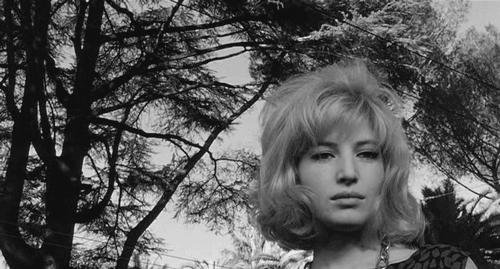
* Real Life Horror: Our constitutional-lawyer president and his attorney general have determined that “the President says so” is sufficient due process to have an American citizen executed without charge or trial. That’s a load off!
* Ralph McQuarrie, the artist who provided much of the visual imagination behind George Lucas’s Star Wars films, has died. Aeron Alfrey at Monster Brains remembers him the best way anyone can: with a gallery of his fascinating creature designs.
* Chills from this Game of Thrones Season Two trailer.
Carnival of souls: Perpetua on the music of 2003, Bordwell on film vs. digital, new Woodring/White/Smith/Cheng/Wiegle/Beto, more
March 2, 2012* Matthew Perpetua has posted his 2003 Survey Mix as part of his Fluxblog 10th Anniversary celebration, and this one’s an absolute beast. Hey Ya!, Maps, Heartbeats, Yeah, Seven Nation Army, Crazy in Love, Milkshake, Galang, I Believe in a Thing Called Love, Strict Machine, 99 Problems (Sean’s Imaginary Remix Wherein Jay-Z Doesn’t Structure the Chorus Around Referring to Beyoncé as a Bitch), Transatlanticism, We Will Become Silhouettes, Pass That Dutch, Never Leave You, Ignition (Remix), Toxic, In Da Club, Danger! High Voltage…What a goddamn year. Eight discs of fun.
* Here’s another big one, but for movie buffs rather than music buffs: David Bordwell’s masterfully enlightening and readable essay on the aesthetic, technical, and ineffable differences between film and digital projection. If you’ve ever really wanted to know what the difference is — resolution, artifacts, the process of projection, the impact on theaters, the reactions of audiences, the opinions of filmmakers, idiosyncratic observations on seeing a digital movie vs. a film one in any number of settings — this is quite simply the best piece on the topic I’ve ever seen. You’ll be smarter for having read it, but it’s a joy to read in the process.
* Zak Smith and Shawn Cheng’s collaborative webcomic/fighting game Road of Knives is back, and they’ve brought my Destructor collaborator Matt Wiegle along for the ride!
* Hooray, Cindy and Biscuit #2 from Dan White! That is a very good comic.
* Did I never mention that Gilbert Hernandez is doing a zombie comic called Fatima: The Blood Spinners for Dark Horse? Shame on me, then.
* A couple of frequent ADDXSTC commenters and friends of the blog have posted strong pieces on some of my favorite works of fiction. Here’s Bruce Baugh on Stephen King’s The Stand and Rev’D on David Chase’s The Sopranos, particularly the last few seasons.
* Andrew White’s taking Frank Santoro’s correspondence course! That oughta be interesting to see.
* Well, this photo of Jonny Negron and friend certainly looks promising.
* Brian Chippendale’s Puke Force is still great, if you were wondering.
* Lovely Evan Hayden piece from Electric Ant #2.
* The tumblr for the Happiness Comix anthology series has made the regrettable decision to shut down, but for now it’s still posting compelling work by Heather Benjamin and Tom Toye, drawn for still another anthology, Dimensions.
* This is quite a sketch of Jerry Robinson, Bill Finger, and Bob Kane’s Joker by Frank Quitely.
* I sure am glad Tom Neely’s now in the naked lady business. Lots more where that came from at his blog.
* Here’s a list of things that are sexier than the young Patti Smith:
* The write-up gets a little too “totes amazeballs” for my taste, but just the other day I was talking with friends about the haunting Sesame Street special in which Big Bird and the still-believed-imaginary Mr. Snuffleupagus spent the night in the Metropolitan Museum of Art and tried to help the ghost of a young Egyptian boy escape the underworld, and here’s an impassioned tribute to exactly that. (Hat tip: Simone Davalos.)
* Jeeeeeeeez, Ta-Nehisi Coates on the life and death of Andrew Breitbart.
* “The NYPD did not respond to our request for comment about allegations it has violated the law.”
* If President Obama loves Omar from The Wire so much, why doesn’t he marry him? Oh right, because he believes marriage is between a man and a woman. Also he’s the commander-in-chief of the drug war. Enjoy the show, Mr. President!
* Finally, can I point out that Christopher Young’s “Leviathan” theme music from Hellbound: Hellraiser 2 did the Inception Sound thing like two decades before the fact? And in Morse code for “God,” at that? In many ways my adult life is just a fruitless search for a way to replicate the high of that first hit of Hellbound.
Downton Abbey thoughts, Season Two
March 1, 2012* I’m quite proud of myself for remaining almost entirely unspoiled about the entirety of Downton Abbey to date. What little I did happen across told me less than nothing. A TV Guide cover asking whether Mary and Matthew would marry only asked the question obvious to any viewer from the pilot on. And hey, when was the last time a PBS show ended up on the cover of a supermarket checkout-aisle magazine anyway? I was more happy for the show than irked at the TMI. More troubling was the season-finale review headline I saw in the sidebar at XOJane: “A Happy Ending No One Wanted,” it read, so at least to an extent, I knew where things were headed. (Once I figured out it wasn’t part of this Julieanne Smolinski piece on handjobs, that is.) But it was more cryptic than revelatory: Was it referring to an ostensibly positive outcome the characters nevertheless didn’t really want? Or did it mean the show had served us something it expected us to like, but we didn’t? I wasn’t spoiled, I was intrigued. (Having seen the ending, which was the happy ending I wanted thankyouverymuch, I still can’t figure out what they must have meant.)
* Rather, what I’d heard about the second season, from a comment here, a tweet there, was that it wasn’t as good at the first, and that this dimunition in quality was tied to an increase in the soapiness of the storylines. And indeed, as reported, Series Two was some sudsy shit. The evil ex returns! An imposter! Rejected by Father after marrying across the tracks! Pregnant after a night’s indiscretion! The climactic all-hands-on-deck natural disaster that threatens them all! Random and unexplained yet somehow reassuring flashes of the paranormal! The doctors say he’ll never walk again, for god’s sake! Each and every one of these plots was featured on The Young and the Restless over the past year, folks. Each and every one!
* But to be blunt — who cares? The show is a soap. It’s about romance and family among a huge cast in a fixed geographic location. Why not embrace, and enhance the production value, of as many soap tropes as possible? At any rate nothing here was more outlandish than Lady Mary’s first sexual encounter ending with the death of her lover in flagrante, for pete’s sake. All of it was handled with the wit and skill and beauty I’d come to expect from the show. (God was it beautiful to look at at times — the misty Christmas morning, the red afternoon light in the library as the family watches the touring war-hero general play a game, the swirling camera when Anna first spotted the secretly returned Bates down in the village.) And frankly, no one who watches Breaking Bad has any right to complain about any show being over the top or hard to swallow.
* For me, the show this season was notable as a showcase for a handful of the performers/characters, and for World War One.
* Rob James-Collier’s Thomas was certainly a grower this season. For starters his is the most underrated of the show’s Great Speaking Voices — the stentorian tones of Carson, the silken waveform of Lady Mary, the bedroom rasp of Lady Sybil, the posh perfection of Lord Grantham. Thomas’s voice sounds like it’s only slipping out of his mouth partway, like it’s hiding something in there somewhere. It sounds like it’s squinting.
* Aside from that, though, I think we got a lot more evidence that he’s more than just some Evil Queer stereotype. His homosexuality is treated with enormous, actually rather heartbreaking sensitivity this time around. (Granted, I thought so the first time, too — there was something crushing in watching him flail to get past that sleazy aristo played by Charlie Cox to get at the burning love letters that were to be his ticket to the top, crushing both in Thomas’s desperation and his lover/victim/victimizer’s swagger in physically overpowering him.) You can’t help but sympathize deeply with a man you’ve watched break down and cry over the suicide of the one person to whom he’s even come close to confiding the truth about himself over the entire course of the series. That that person was a badly wounded, blind, depressed stranger shows, I think, what Thomas truly thinks of himself. He’s a bully because he’s been bullied, overtly at times I’m sure, but also in a thousand ways large and small by the strictures of the heteronormative society to which he has no choice but to conform. Internalized oppression.
* But even his bullying was humanized. He unilaterally disarmed from his grudge match with Bates, and advised O’Brien to do the same. He was shown to display real fear and, I think, regret and shame over the results of his actions — when his attempt to become a black marketeer ended in ruin, say, or when he realized his dognapping had gone tits up. Like O’Brien when she looked in the mirror and saw a person who’d just attempted to injure a pregnant woman, I get the impression he wasn’t nuts about what he’d seen in himself, even if, in the end, his final scheme was rewarded.
* What’s more, his decision late in the season to be more cheerful, friendly, helpful, and productive may have been just an attempt to ingratiate himself with Carson and the Crawleys now that his prospects had dried up, but the fact of the matter is that, well, he became more cheerful, friendly, helpful, and productive. In the same way that his platonic folie a deux with Evil O’Brien in the first season helped incentivize bad behavior, I like to think that the new status quo, the new reactions and rewards he’ll receive for being a decent person, can’t help but steer him in that direction. The fact of the matter is he has a great smile, and he can be very charming and win people over just as easily by actually being decent as by faking it. Being a dreary, nasty fuck has very strong headwinds, and perhaps his new course of action will help him see there’s another, less unpleasant course he could set.
* In a similar vein, I came to internally refer to O’Brien this season as (to borrow a term from comics fandom, as I am wont to do) Nu’Brien. No, she wasn’t quite able to shed her old self — egging Thomas on with his black marketeering and shady attempts to get in Lord Robert’s good graces, making mischief with Mrs. Bates. But for the most part, she used her powers for good, not evil, even when her conception of “good” was as narrowly defined (PRESERVE AND PROTECT THE HONOR AND HAPPINESS OF LADY GRANTHAM) as possible. Like Thomas she had her moments of genuine regret — the atom bomb that was her realization that she’d essentially aborted Cora’s baby for nothing had its fallout, as did her poorly thought-through decision to alert the genuinely awful Mrs. Bates to Mr. Bates’ return to Yorkshire. And moreso than did Thomas, she was able to express concern and sympathy for the other servants, from William to Anna to, eventually, Bates himself. There are few things I value more in fiction than when characters overcome their differences to be kind to each other, so I found Nu’Brien rather moving.
* But even more than that, I just found her interesting. When you find out that in real life she’s pretty much a dime piece, you start not just to appreciate but to marvel at actress Siobhan Finneran’s physical comportment on the show. Unlike…well, every other character, I think, O’Brien reveals nothing with her face or voice. She’s like an automaton compared even to Thomas, let alone comparable women characters — Mrs. Hughes, say, or Mrs. Patmore, or Anna or Jane or Ethel or even Shore. That kind of control of one’s face and voice and body is admirable in an actor. She’s kind of the inverse of my beloved Mickey Doyle in Boardwalk Empire, her buttoned-up weirdness a contrast with his showy weirdness, but both of them every bit as watchable and pleasurable.
* So Lord Robert’s midlife crisis was provoked by an actual crisis! That’s smart writing, especially given how out-of-left-field his unfaithfulness to Cora would have felt were it not rooted in his deep disappointment in himself and in the system over his helplessness during the War. Of course there was the subtle and simultaneous strain of dissatisfaction with, even dislike of, Cora herself — her inability to meet his emotional needs or even recognize that he had any during Downton’s wartime period, her pragmatism-cum-coldness over the various interpersonal crises that developed during that time, particularly regarding Mary and Matthew. And his impotence over the War was echoed by his loss of control over the fates of Mary and Sybill, and even over Downton itself. All told, you had a guy who’d been raised all his life to be the center of his world suddenly discovering that a) he wasn’t, and b) in a lot of ways it wasn’t much of a world to begin with. He asked Jane, his ersatz paramour, if she ever wondered what it was all for. Can’t get more direct than that.
* But even before that, he had an exchange with Cora I wrote down verbatim: “I don’t think you’re a fool, isn’t that enough?” she asks him. “No,” he replies. “Maybe it should be, but it isn’t.” It struck me then as an astute take on how frustrating, even confusing, it can be to us when we find ourselves unable to take succor from our significant others and life partners despite the abiding satisfaction we receive from them in every other respect. But now I see it as the roots of a crisis of confidence, in himself and in the institutions that shored him up. Thus he went from a character I didn’t even mention in my discussion of Season One, during which his stalwart reliability rendered him a prop more than a player, to one of my favorite characters on the show. Hugh Bonneville rendered him utterly likeable throughout.
* The main “She’s Leaving Home”-type story here was Sybil’s, of course, and her runaway romance with the Bono of the motorpool. But I was more profoundly moved by Edith’s story, how she quietly came into full personhood as she took on the responsibility of providing for the wounded officers in Downton’s care. As everyone always said, there was little doubt that her sisters would find their place in the world, even if they never defied convention as Sybil did. By contrast, Edith is a prime example of the true cost of the sex and class system, which walls off potentially productive members of society on both sides of the divide from finding their true calling and making the contributions they’re truly capable of making. Only the apocalyptic upheaval of the Great War enabled Edith to do something other than wooing lower-upper-class suitors. When you think of Oscar Wilde imprisoned or Alan Turing killing himself, when you think of centuries of potential giants of politics or literature or science toiling unthanked on Mississippi plantations, when you think of half the population of Saudi Arabia forbidden even to drive cars, think of what these people could have done for the classes that oppressed them, of whatever stripe. The loss of the oppressed is far more grave, but it’s not just the oppressed’s loss, is what I’m saying.
* Am I the only one who started singing “How do you solve a problem like Lavinia?” to himself the moment she looked a little ill at the dinnertable? The show (I know, it’s all written by one dude, but “the show” is a hard habit to break) wrote itself into a corner with this lovely, pleasant, selfless lady — certainly more pleasant and selfless than Lady Mary even at the best of times! — and solved it in a manner I found rather crass, whatever its realism. It’s not as though she’d been allowed to develop into anything but the remotest corner of the Matthew/Mary/Carlisle/her love quadrangle, so while her loss illustrated both the reach and the caprice of the Spanish Influenza epidemic, we really only felt that loss through the other characters, not through Lavinia herself. This was the second time I thought the show grabbed real-world catastrophes and clumsily wielded them as two-bit storytelling tools — the other, and more egregious, being the time that both the Great War and the Troubles were reduced to farce in Branson’s wacky assassination/protest-by-prank mix-up.
* These were all the more striking in light of how well the show dealt with the War itself most every other time. Downton Abbey was never going to be an explicitly antiwar show — it’s just not a political beast, and at any rate a show that values loyalty and honor and courage as much as this one does is going to be fairly helpless in the face of the choice to depict cowardice as either a moral failing or an act of sanity against the insanity of the war itself. (Which I suppose is a political program, disguised as apolitical by centuries of morals established by the masters of war.) But that doesn’t mean that the show couldn’t use its focus on the complexities of familial and romantic relationships in the context of the old class system to shine a spotlight on war’s costs where those concerns intersected.
* I think my favorite example here is a simple, physical aspect of one actor’s performance: The black, angry, piercing depression in the eyes of Dan Stevens as Matthew Crawley after he’s paralyzed. He displayed an intensity (and a handsomeness, not incidentally) he’d never been able to before, and the rupture in the presentation was sufficient to convey just how bad things really were for him, and by extension for everyone.
* But really I liked all the major war storylines: William’s slow death and its impact on Daisy, lingering even after he’d gone; the tale of two war widows with Robert’s beloved Jane and the shunned unmarried Ethel; Thomas’s million-dollar wound; Matthew and William’s painful goodbyes, and their bizarre it-was-all-but-a-dream returns from the front before inevitably heading back into the breach; even the craziness of the False Patrick, with his burns and bandages and Anthony Perkins voice.
* My one regret is that Molesley’s shirking never went anywhere. Between that, his doomed run at Anna (thwarted by Bates), his equally doomed run at becoming Lord Grantham’s valet (also thwarted by Bates), and his drinking at the Spanish Flu dinner, I thought he was headed for a full-fledged Character Arc, with said arc bending toward villainy, but the light comedic business with him getting drunk was the last we saw of him. He was the dog that didn’t bark.
* A few more observations:
* Good Lord did sleevelessness become Michelle Dockery. I found myself awfully glad Lady Mary was stuck with the one dress for the duration.
* What better time to cheat on your spouse or fiancée than when she’s laid up with a pandemic that’s killing millions worldwide?
* Just about the only thing that could make the Dowager Countess more entertaining was to have her start laughing at her own jokes, so thank goodness they did exactly that. “I do hope I’m interrupting something” and “I don’t expect you’ll see me again”/”Is that a promise?” are lines for the ages by the way. Also, any time I really look at Maggie Smith’s eyes, I think to myself that she’s got a truly great villain role in her somewhere, if the right part comes along. I mean a David Lynch-type villain, a villain who radiates menace. The Dowager Countess is a pussycat compared to what’s potentially in there.
* What a pleasure it is to watch a show during which the problem for the actors is that time moves fast rather than slow. I’ve been watching The Vampire Diaries (it’s fun! It’s like True Blood without the intentional camp factor, so it’s like this super-serious exploration of sexy young vampires and witches and werewolves taking their shirts off and literally ripping people’s hearts out on-camera), and at some point during its third and current season it hilariously revealed that not even a year had gone by since the pilot. Characters had gone from “la-di-da, cheerleaders, football players, popular girls, blah blah” to “my entire family and circle of friends has either been murdered by or turned into vampires” between the start of junior year and the Fourth of July. Lost is probably the best example of a show where each episode spanned a single day or so, at least for a while. Yet in comics like Love and Rockets, or in shows like Battlestar Galactica, we see just how rich for the storyteller and pleasurable for the audience taking advantage of the swift passage of time can be. I’m not 100% convinced that Downton Abbey has sufficiently aged its performers to account for, what, the passage of seven years of story time over the course of one year of real time, but it’s a challenge I find myself glad they’ve accepted.
* Most poignantly, I found myself pretty profoundly moved and disturbed by the scene in which the family and staff gather round the clock to honor the war’s end, because it reminded me of the now-quaint notion advanced by another of the Great Post-Millennial TV Dramas: “Wars end.” Ha, remember when that was true?
Downton Abbey thoughts index
March 1, 2012Here are links to all my Downton Abbey posts. Enjoy!
Season One
Season Two
Season Three Cheat Sheet
NOTE: All episode numbers are for the US version.
Season Three, Episode One
Season Three, Episode Two
Season Three, Episode Three
Season Three, Episode Four
Season Three, Episode Five
Season Three, Episode Six
Season Three, Episode Seven
The Best Dowager Countess Quotes from Season Three
Five Big Questions for Season Four
Season Four, Episode One
Season Four, Episode Two
Season Four, Episode Three

